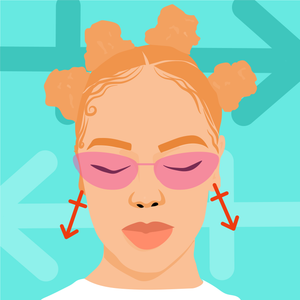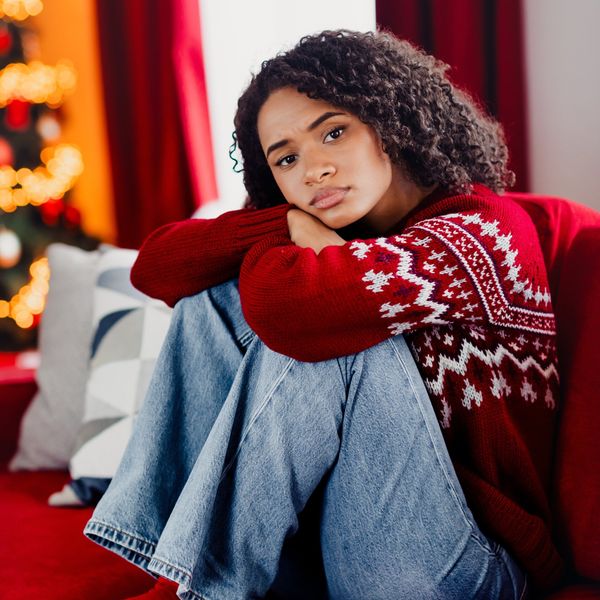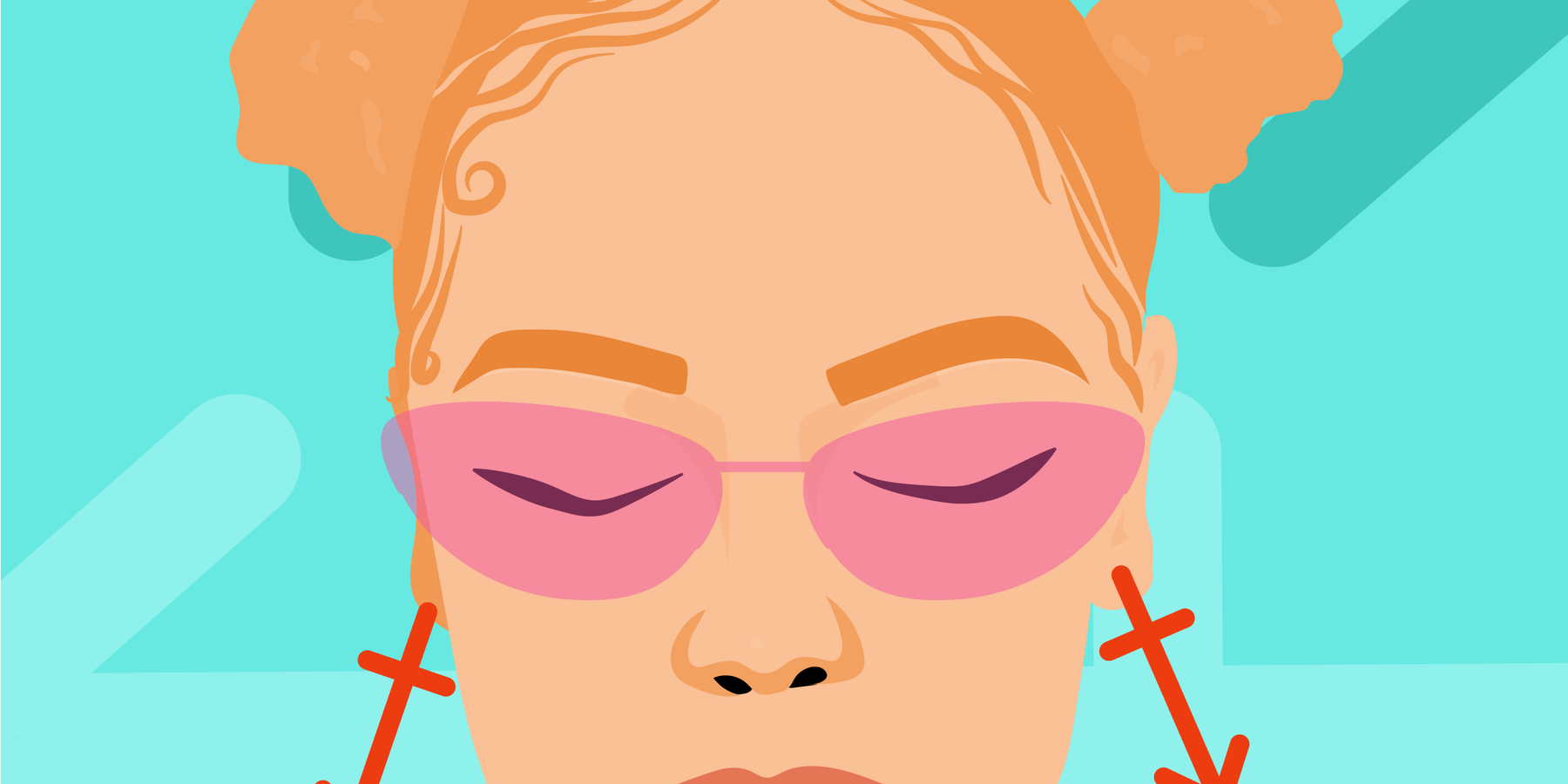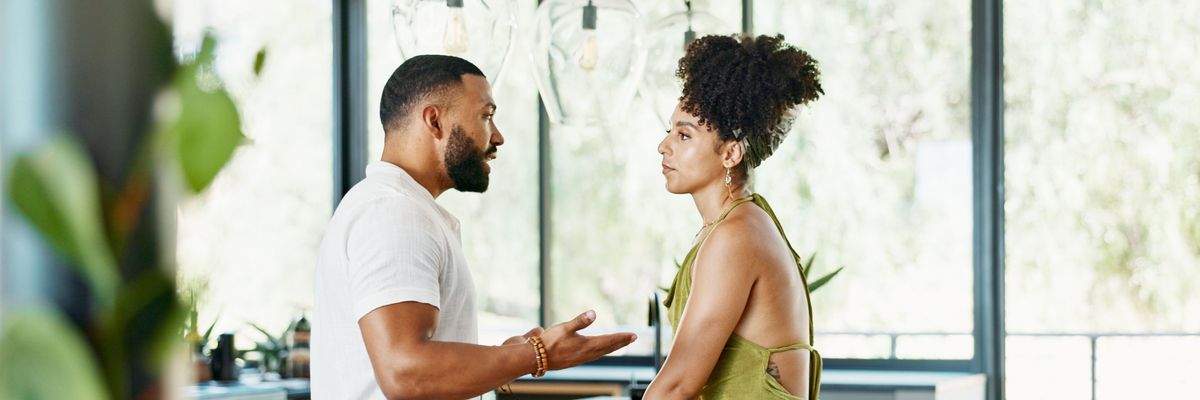I've Lived In Spain For 3 Years & This Stunning City Is An Absolute Must To Travel To
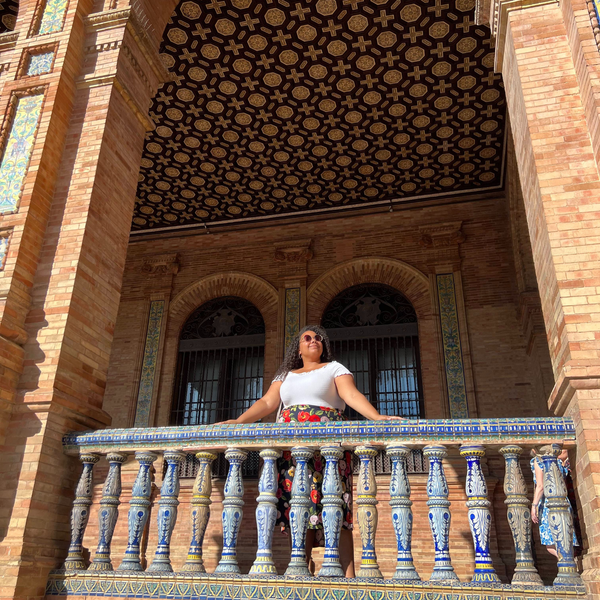
Vibrant streets adorned with colorful buildings, fragrant orange trees, and charming cafes surround the world’s largest Gothic Cathedral. If you have Spain on your mind, the southern city of Seville will instantly capture your heart and leave you coming back for more.
I might be incredibly biased, but after living in Spain for three years and traveling the entire country, the region of Andalusia is my favorite–no contest! Making a visit to its capital, Seville, is an absolute must.
While cities like Barcelona or Madrid get all of the attention, the region of Andalusia is home to some of the most iconic aspects of Spanish culture, and in Seville, you’ll find them in full effect.
Known for its lively culture, expect to see locals gather in the evenings to enjoy pulsating flamenco shows on the street and indulge in delicious tapas. You’ll be taken aback by the stunning architecture, a unique blend of Spanish and Moroccan styles – an ode to the history of Moorish rule in the region for 800 years.
To prepare you for your first time in the Spanish city, here's everything to know about traveling to Seville.
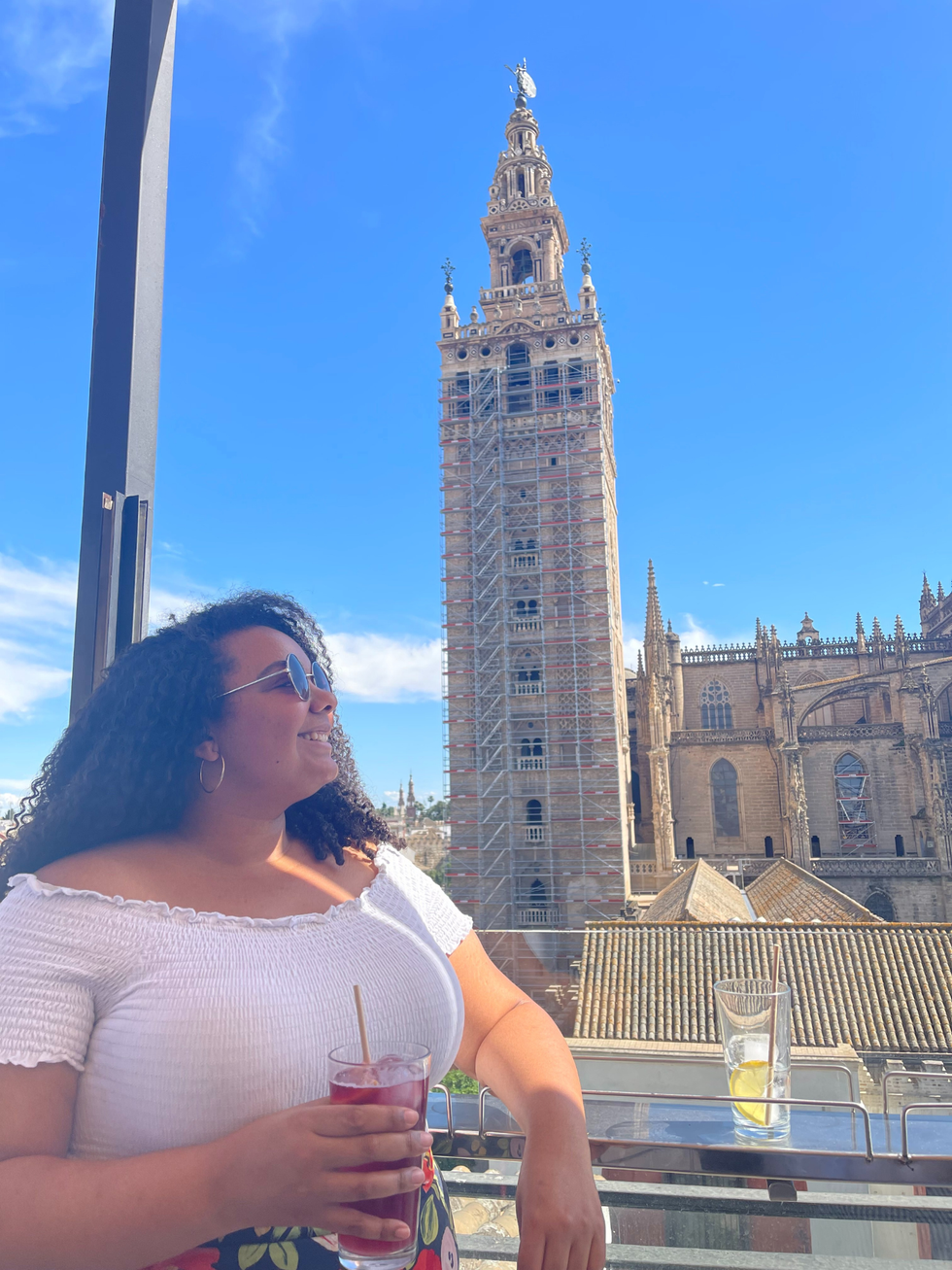
Ambar Mejia/xoNecole
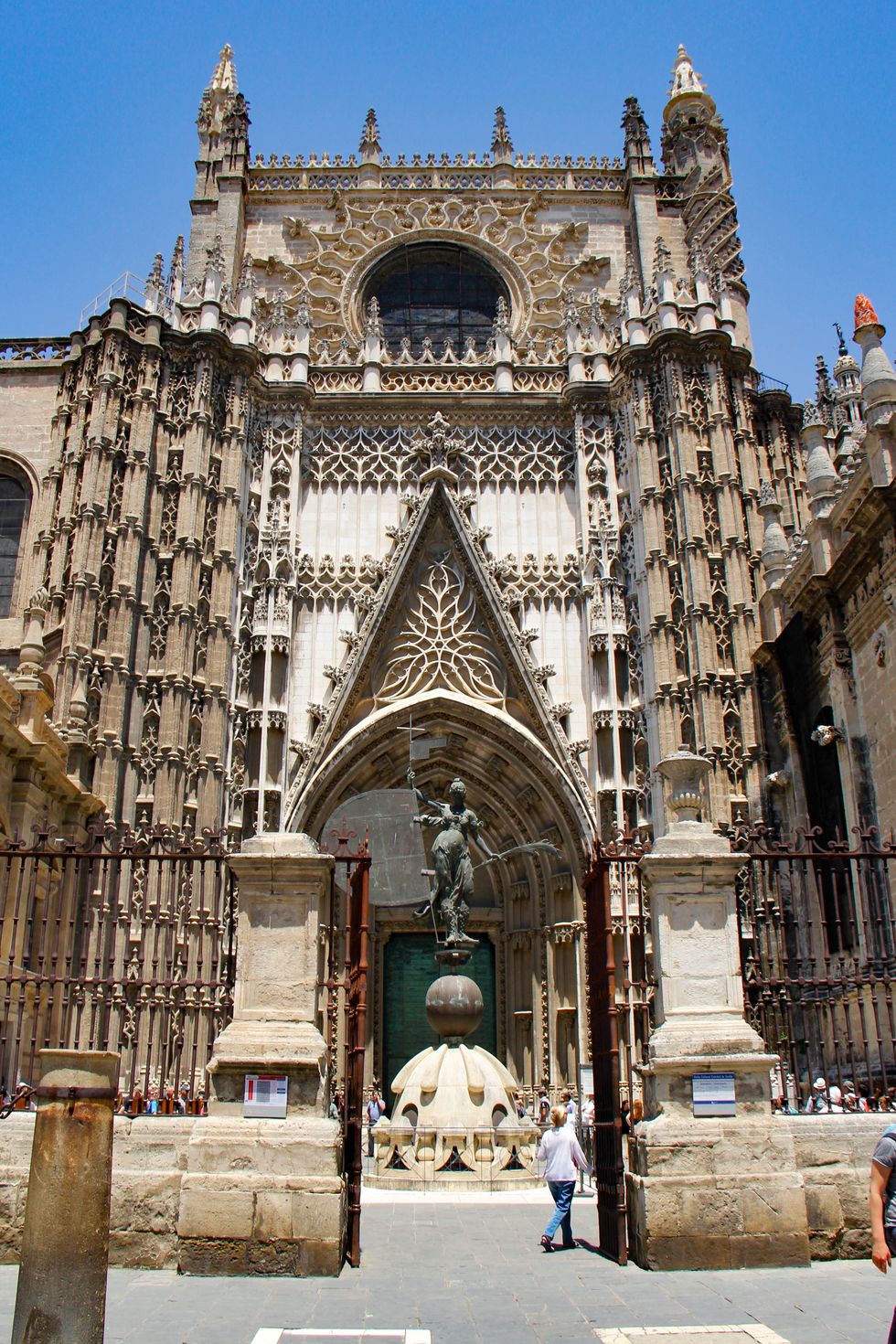
La Catedral
Ambar Mejia/xoNecole
What To Do in Seville
Stroll the streets of Santa Cruz and Triana.
Is there a better way to get to know a city than to get completely lost? Who needs a map? In Seville’s case, it will be extra easy because many of the interior streets are built like mazes–thank the Moors for that one! So okay, maybe bringing a map isn’t a bad idea. I highly recommend strolling through the neighborhoods of Santa Cruz and Triana.
Visit La Catedral.
They were not playing games with this one. The Sevillanos wanted to build a cathedral as opulent and beautiful as was humanly possible–which apparently took them 101 years to achieve. But SUCCESS! Because this cathedral is the third largest in the world (the first one being the literal Vatican), and it’s also a UNESCO heritage site! It’s impossible to walk around the Santa Cruz area and NOT see it. During Seville’s world-famous Easter processions, the largest and most famous in all of Spain, this cathedral takes center stage.
Tour the Alcazar.
While you’re in the neighborhood, head over to another MUST-SEE: the Alcazar of Seville. If it’s summer, buy your tickets ahead of time to avoid standing in the sun. If you didn’t think ahead, it’s okay.
The line moves quickly, but bring water and a hand fan like a true Española because this city gets HOT. Inside this ancient palace, you’ll find an architectural masterpiece started by the Moors in the 10th century with a mix of Mudéjar and gothic styles. It's very fancy and a great spot for Instagram shots.
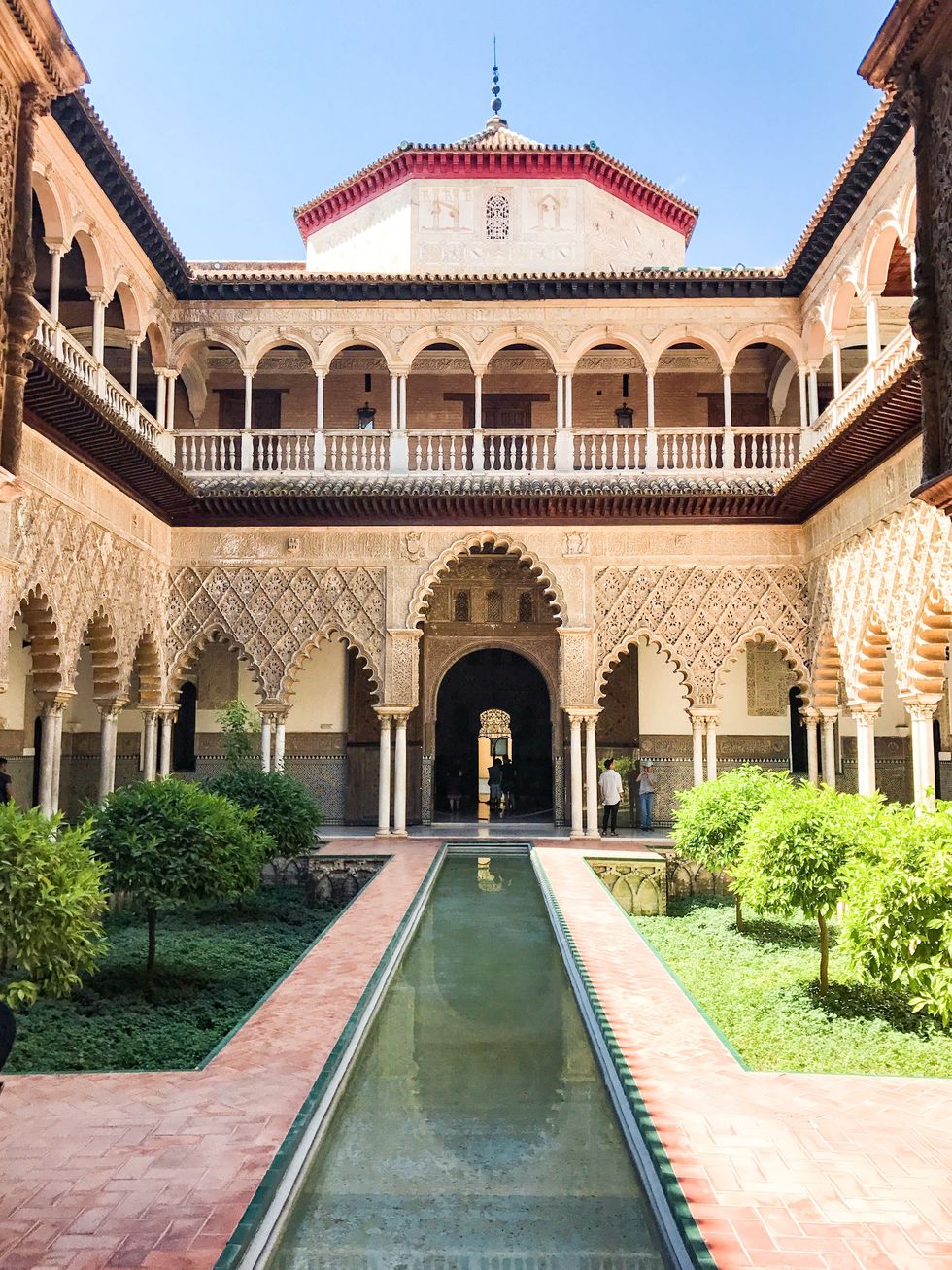
The Alcazar of Seville
Ambar Mejia/xoNecole
Have a photoshoot at Plaza de España.
No visit to Seville is complete without a visit to Plaza de España. This spot is iconic and has appeared in many films–including Star Wars! It has four bridges that represent the ancient kingdoms of Spain and 48 benches for each province in the country. You can paddle around the plaza or simply take a nice stroll. But watch out, there’s a ton of horse-drawn carriages here, and with horses comes something you wouldn’t want to step in.
Culture Shock Alert:
Y’all, when I first moved to Spain, they included a section on staring in my orientation. I still wasn’t prepared for how much it might happen. My colleagues explained to me that in Spain, it’s totally normal to stare at people if you find something interesting about them, like their shirt, or are just bored and need something to look at. It’s not weird to them at all, but if you’re coming from The States, and especially as a Black person, it can initially feel uncomfortable.
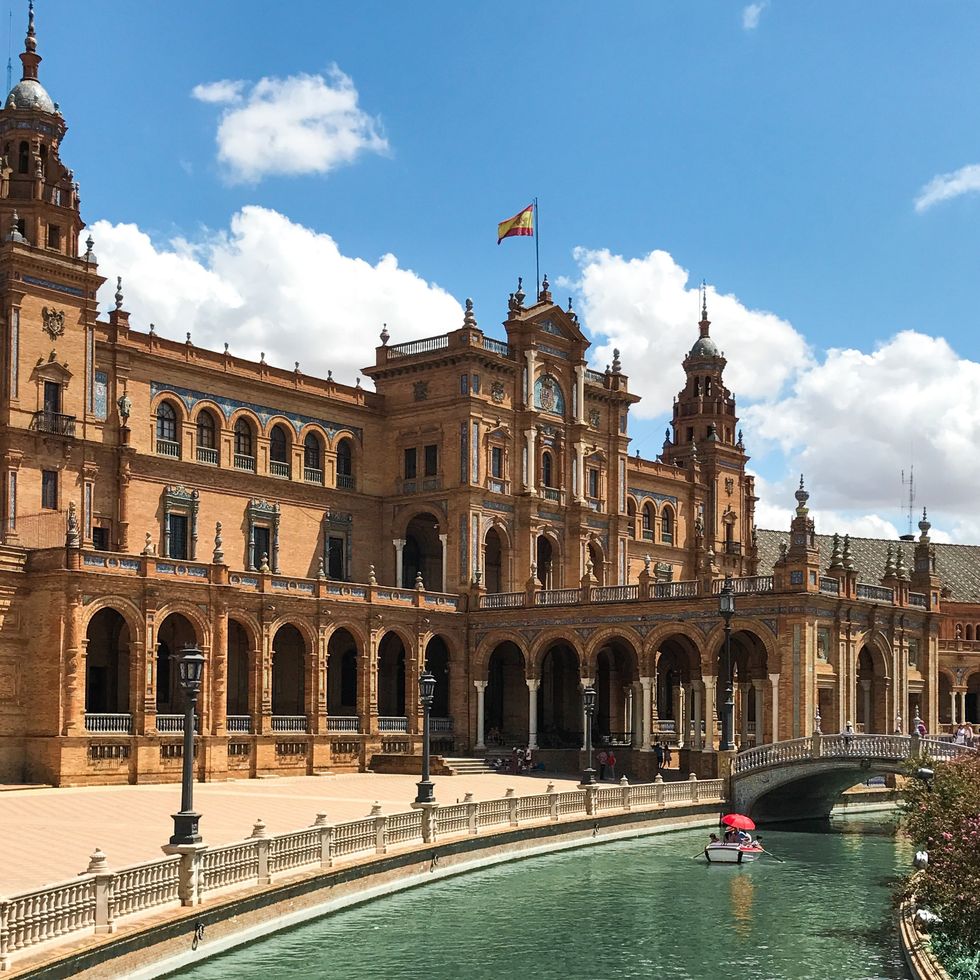
Plaza de España
Ambar Mejia/xoNecole
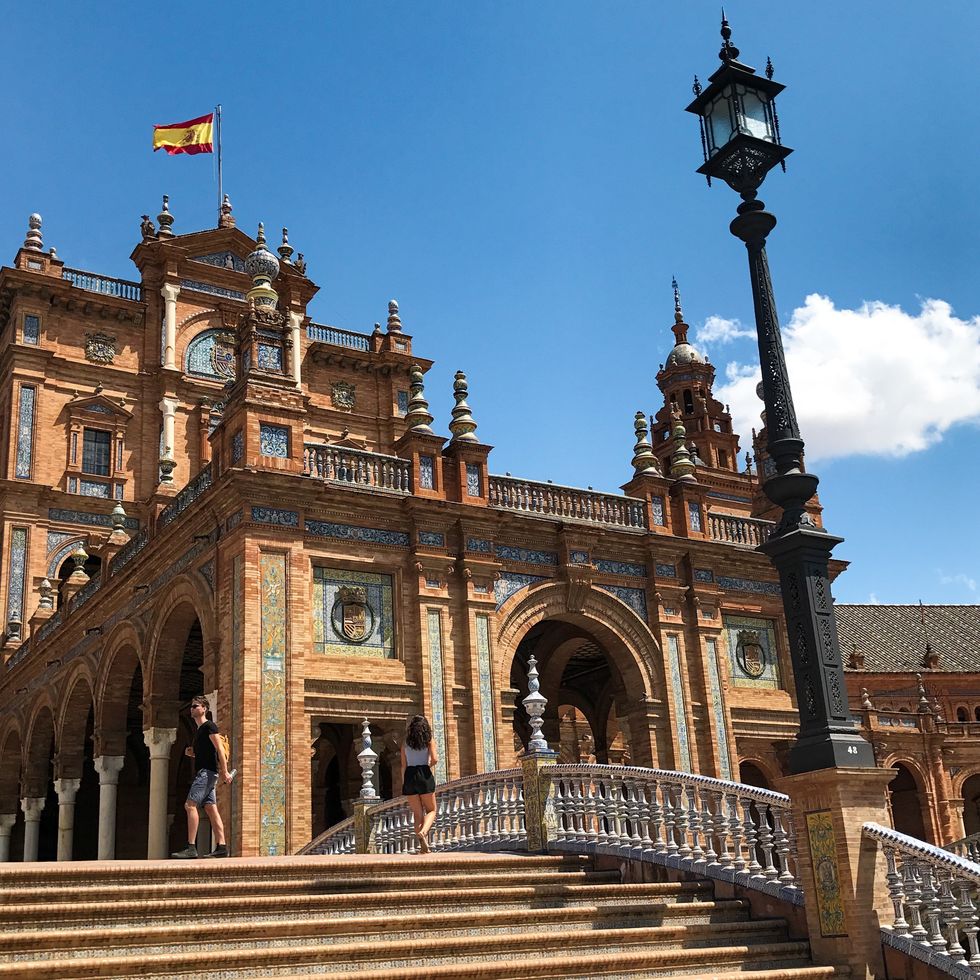
Plaza de España
Ambar Mejia/xoNecole
Relax in Parque de María Luisa.
Just across the way from Plaza de España, you’ll find Parque de María Luisa overflowing with exotic greenery, fragrant orange trees, Moorish fountains, and decorative benches (a.k.a. there will be tons of places to sit under shade in the summer). It will also take you right along the Guadalquivir River.
Stroll along the Guadalquivir River.
If you come in summer and it’s too hot to deal with or if you simply want a nice area to stroll away from the center, head down to the Guadalquivir River. Next to the Puente de Triana behind Mercado Lonja del Barranco, you’ll also find tons of people laying out with picnics and beverages. Bring a bocadillo (Spanish for "sandwich") and a bottle of wine to do as the Sevillanos do.
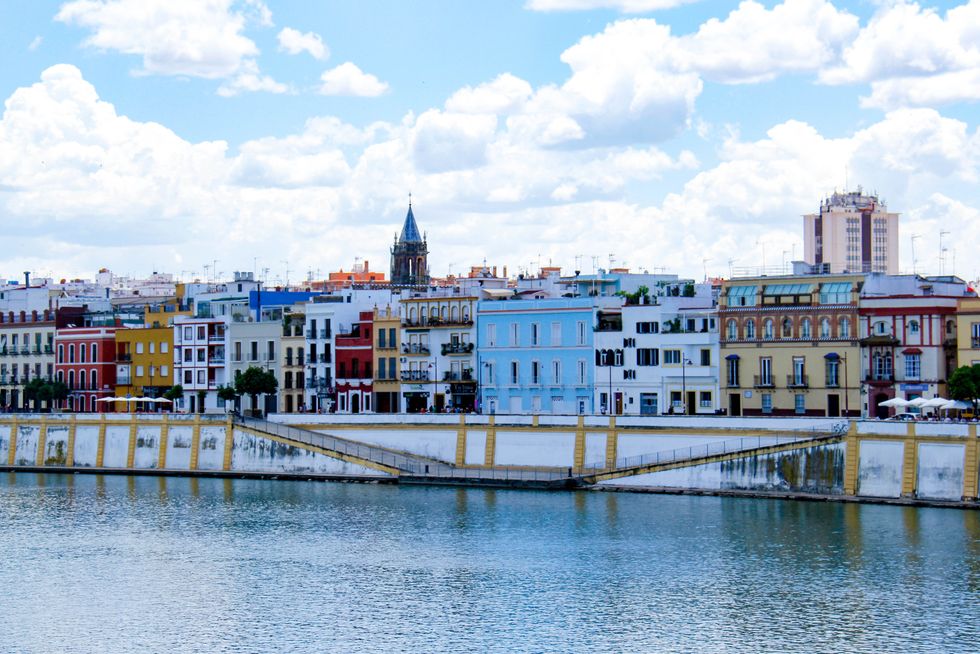
Guadalquivir River
Ambar Mejia/xoNecole
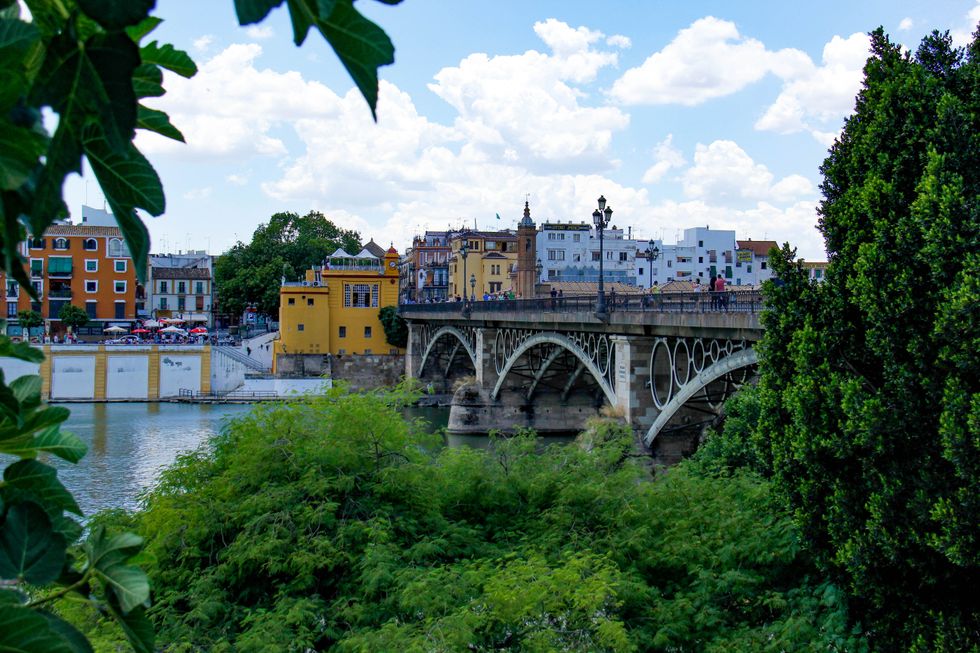
Guadalquivir River
Ambar Mejia/xoNecole
Check out the Real Plaza de Toros.
On your walk along the river, you’ll find many famous stops like the Real Plaza de Toros. It is home to one of the most famous bullfighting festivals in the world, but you don’t have to watch that to check out the cultural icon. (In fact, if you’re not ready to see many bulls die, it’s best if you don’t.) If you’re interested in the tradition without the gore, there is a museum you can visit to learn about bullfighting in Spain, and you can also tour the grounds.
Watch the sunset behind Torre del Oro.
Another spot you’ll pass on your walk along the river is the Torre del Oro, or the Tower of Gold. Some say it has this name because of its golden reflection along the river, others say it was once covered in gold tiles. I recommend a visit at sunset when its golden hues shine against the turning sky. Inside you’ll find a small museum about local maritime folklore. If this is not something you’re interested in, it’s enough just to see it from the outside.
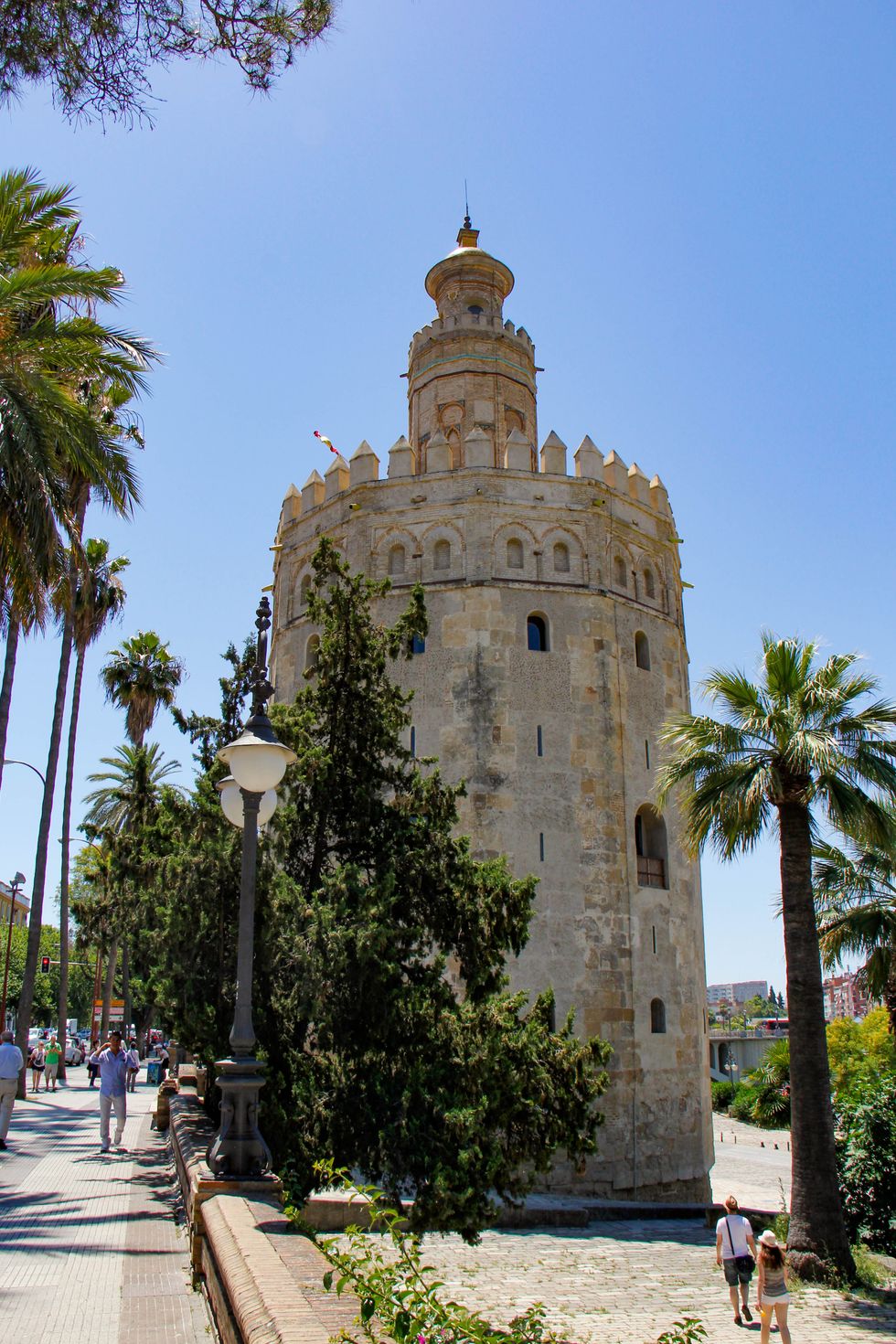
Torre del Oro
Ambar Mejia/xoNecole
Watch a flamenco show.
Flamenco was born and raised in Andalusia, and Seville is one of the best places to watch a flamenco show in Spain. Check out popular venues like Museo del Baile Flamenco, Tablao Flamenco, or La Casa del Flamenco for a show.
Find some shade under the Metropol Parasol.
This mushroom-shaped icon is the largest wooden structure in the world and offers great aerial views of Seville. They’ve also recently installed an “I love Sevilla” sign in front of it, to take the ultimate tourist photo.
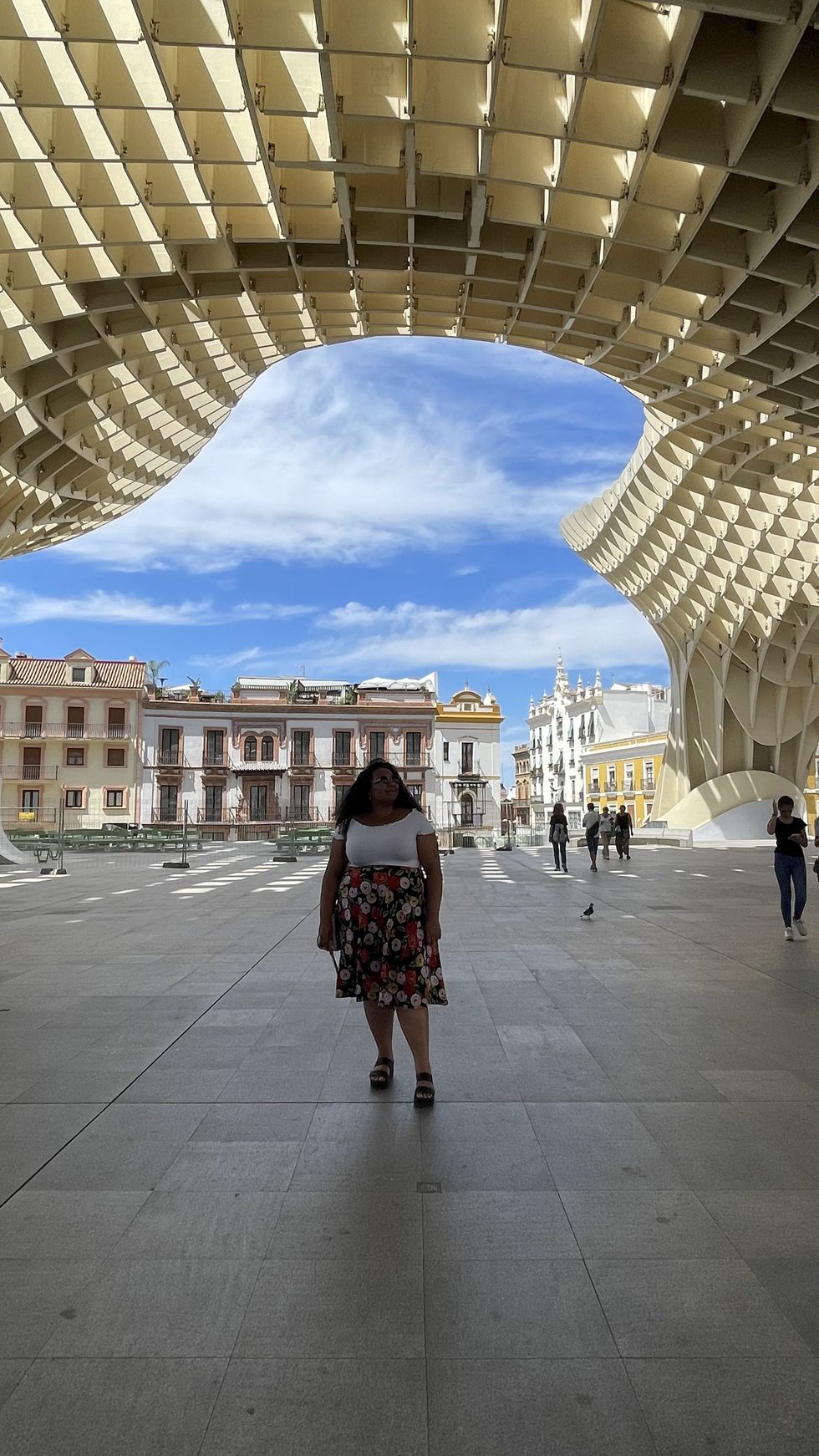
Metropol Parasol
Ambar Mejia/xoNecole
When To Eat in Spain: Breakfast, Lunch, Dinner Times
Eating in Spain is serious business, and there are so many amazing dishes to try, I could probably write a whole article about it. As someone from the U.S., where you can eat pancakes for dinner and steak for breakfast, it was shocking to me to find that people in Spain eat certain things at certain times, and it’s very weird to eat off that schedule. You might not even find anything open besides tourist traps. Let’s get into it.
Breakfast: 7 a.m. - 12 p.m.
In Spain, this is the smallest meal of the day and typically consists of fresh bakery bread or pastries with coffee or juice. Locals may eat fruit, churros, sandwiches on half-baguettes, or an open-toasted baguette with toppings. My favorite combo is olive oil, crushed tomato, and Spanish ham.
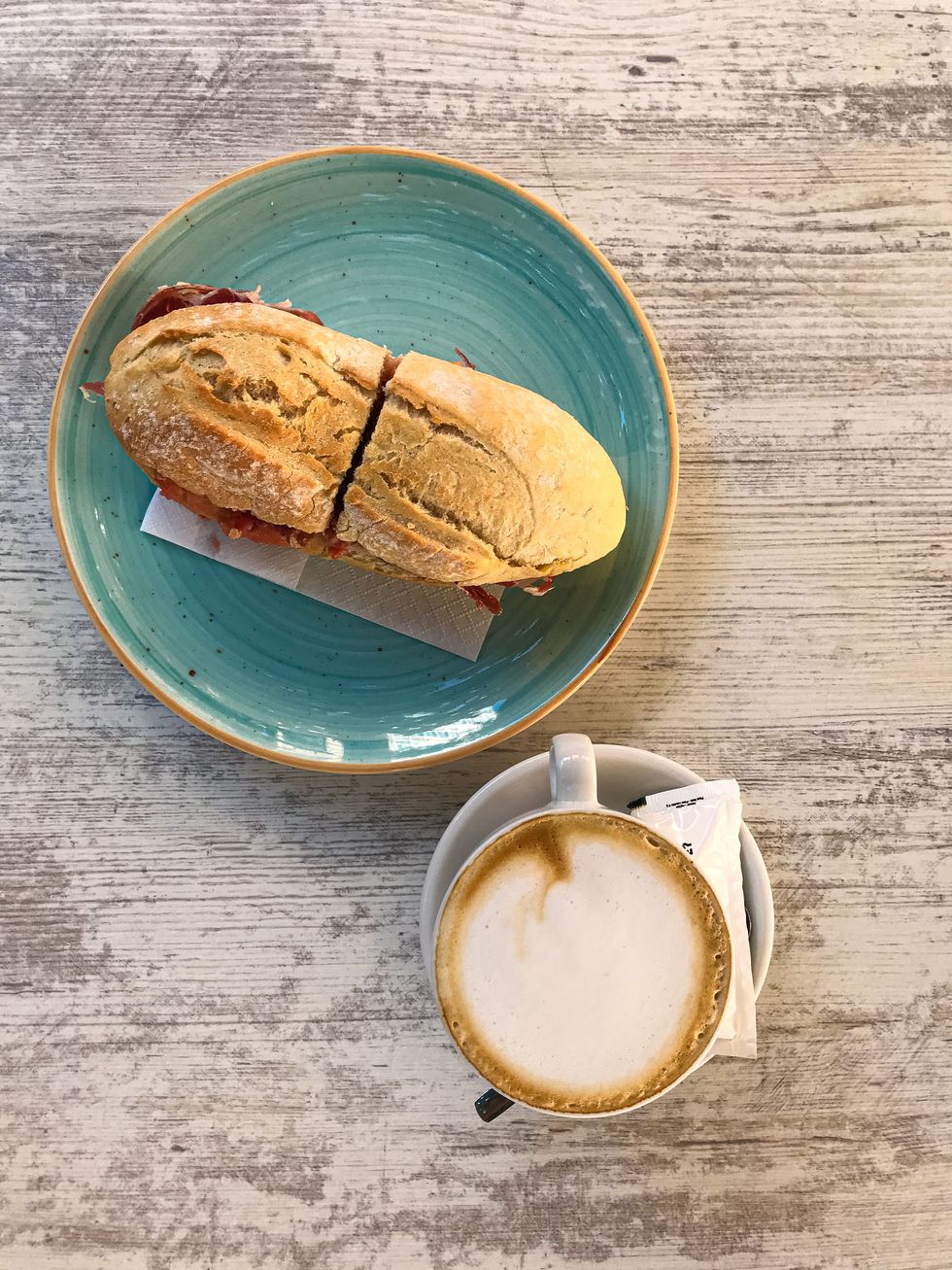
Breakfast in Spain
Ambar Mejia/xoNecole
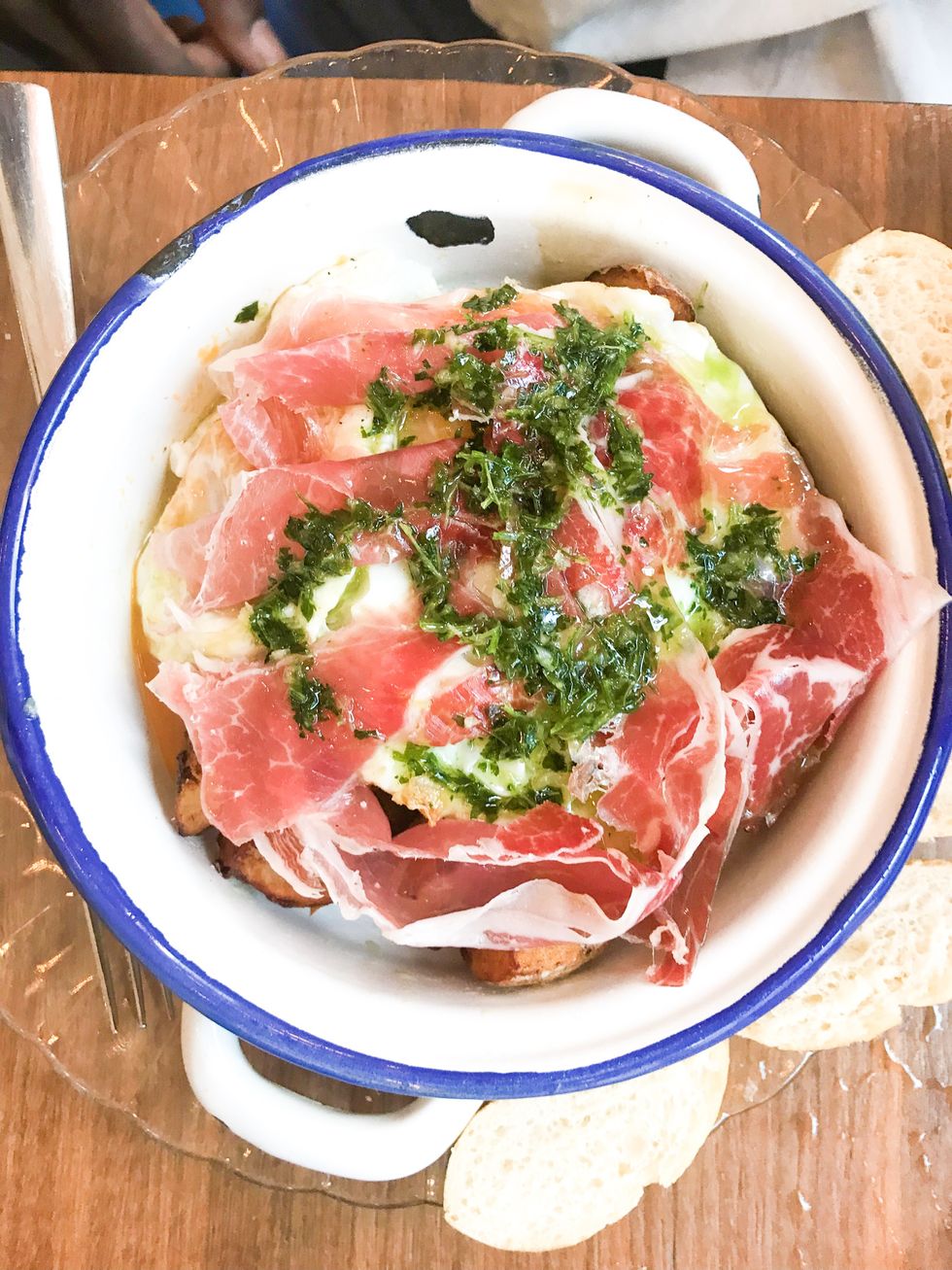
Spanish ham
Ambar Mejia/xoNecole
Lunch: 2 p.m. - 4 p.m.
The biggest meal of the day in Spain starts at 2 p.m., and in general, most local places will stop serving food around 4 p.m. Midweek, you can usually find a menu of the day at this time that will include salad, bread, an appetizer, a main dish, dessert, and a coffee all for like 10 euros! If you want to try paella, this is the best time to do it. Don’t miss this meal time as there will not be anything substantial to eat until 8 p.m. except at tourist traps.
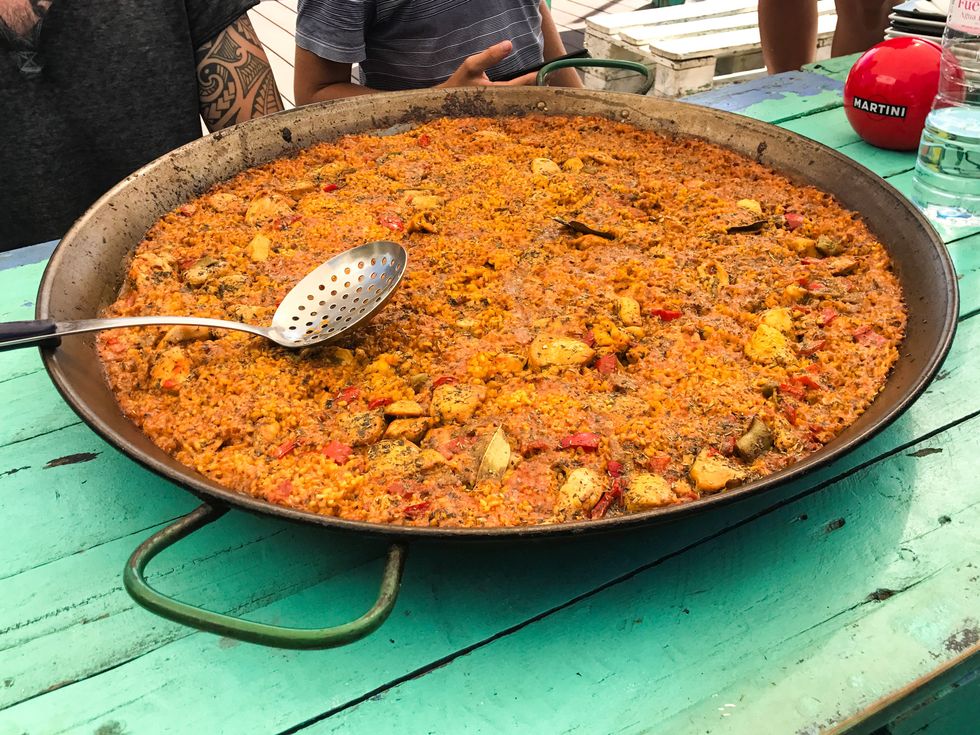
Paella
Ambar Mejia/xoNecole
Merienda (afternoon snack): 5 p.m. - 8 p.m.
This is a perfect time for a sweet treat like churros, ice cream, or a pastry. You could also opt for savory bites like olives, cured meats, and cheeses, another small sandwich, or something on the sweeter side, like churros con chocolate.
Dinner: 8 p.m. - 1 a.m.
This is when the famous Spanish tapa comes out to play. A tapa is like a small portion of Spanish food. You can go from bar to bar, ordering a drink and a tapa at each bar. You can also order rounds of tapas at one bar, savoring the variety while you enjoy rowdy conversations with friends.
The common practice is to order several for the table, and I love it because that way, you get to try more things.
Where To Eat in Seville
With an abundance of fresh local ingredients like seafood, olive oil, and vegetables, you'll quickly fall in love with the delicious local cuisine. Make sure to hit up restaurants like Taberna del Arenal, Casa Paco, and Bar Casa Morales for mouthwatering plates.
Tapas to try:
- Tortilla de patatas: Spanish omelette
- Croquetas: Croquettes, my favorite ones are the ham ones
- Gambas al ajillo or gambas al pil pil: Shrimp in a garlic sauce or paprika sauce
- Patatas Bravas: Potatoes with a spicy sauce
- Jamón: Cured Spanish ham
- Queso Manchego: Aged sheep cheese
- Ensaladilla rusa: Potato salad made sometimes with shrimp (I know. I know. But don’t knock it til you try it!)
- Cola de Rabo: Oxtail
- Pan con tomate: Freshly toasted bread with an olive oil drizzle and crushed local tomatoes
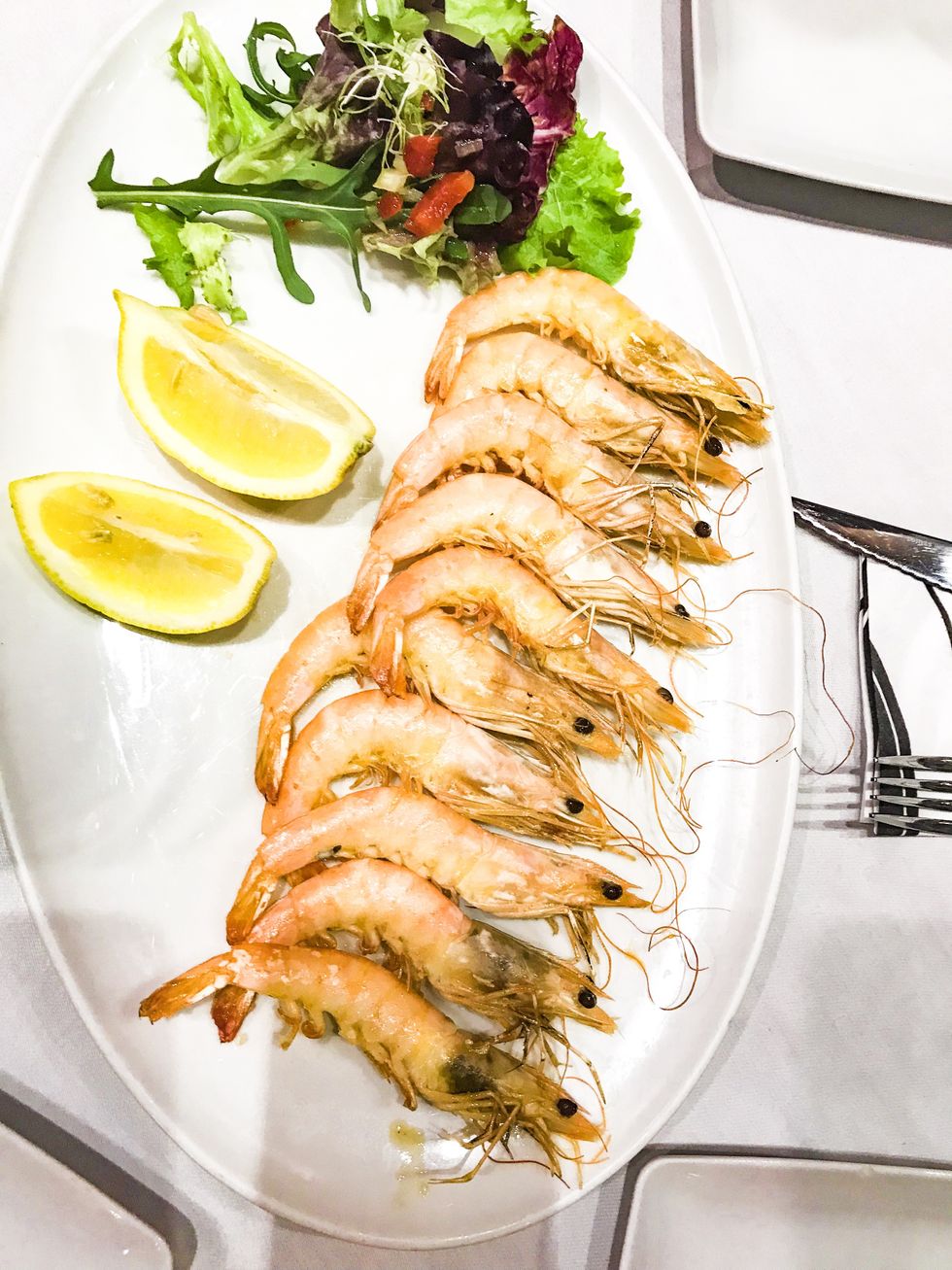
Gambas al ajillo
Ambar Mejia/xoNecole
Culture Shock Alert:
Service in Spain is very different from the United States, especially in more traditional areas like Andalusia. This is because there are different cultural expectations. For one, the servers get salaries, they don’t live off tips. And on the other hand, in Spain, meal times are about relaxation, connection, and good company.
It’s not out of the realm of possibility for you to spend 2-3 hours just laughing and drinking with friends, and no one will rush you out the door. In Spain, they value conversation and connection at mealtime so much, it even has a name “sobremesa,” and it would be rude to get up from your table without it. In that sense, your server might not come around often because they don’t want to interrupt or rush your good time. So don’t be afraid to flag them down!
When To Visit Seville
No matter when you visit Seville, you will fall in love, but different months are great for different activities.
So what are you looking for?
Mild weather, less tourists, and cheaper prices? Try November-March but bring a jacket because it can get chilly.
Lively crowds?
You’ll see tons of people out in the summer months. BUT BEWARE OF THE HEAT. It is like a hot, wet blanket and is the worst during the hours of 2 and 5 (siesta time). So if you visit during this time, bring cool clothing, a hand fan, drink tons of water, and go indoors during siesta to rest and have lunch.
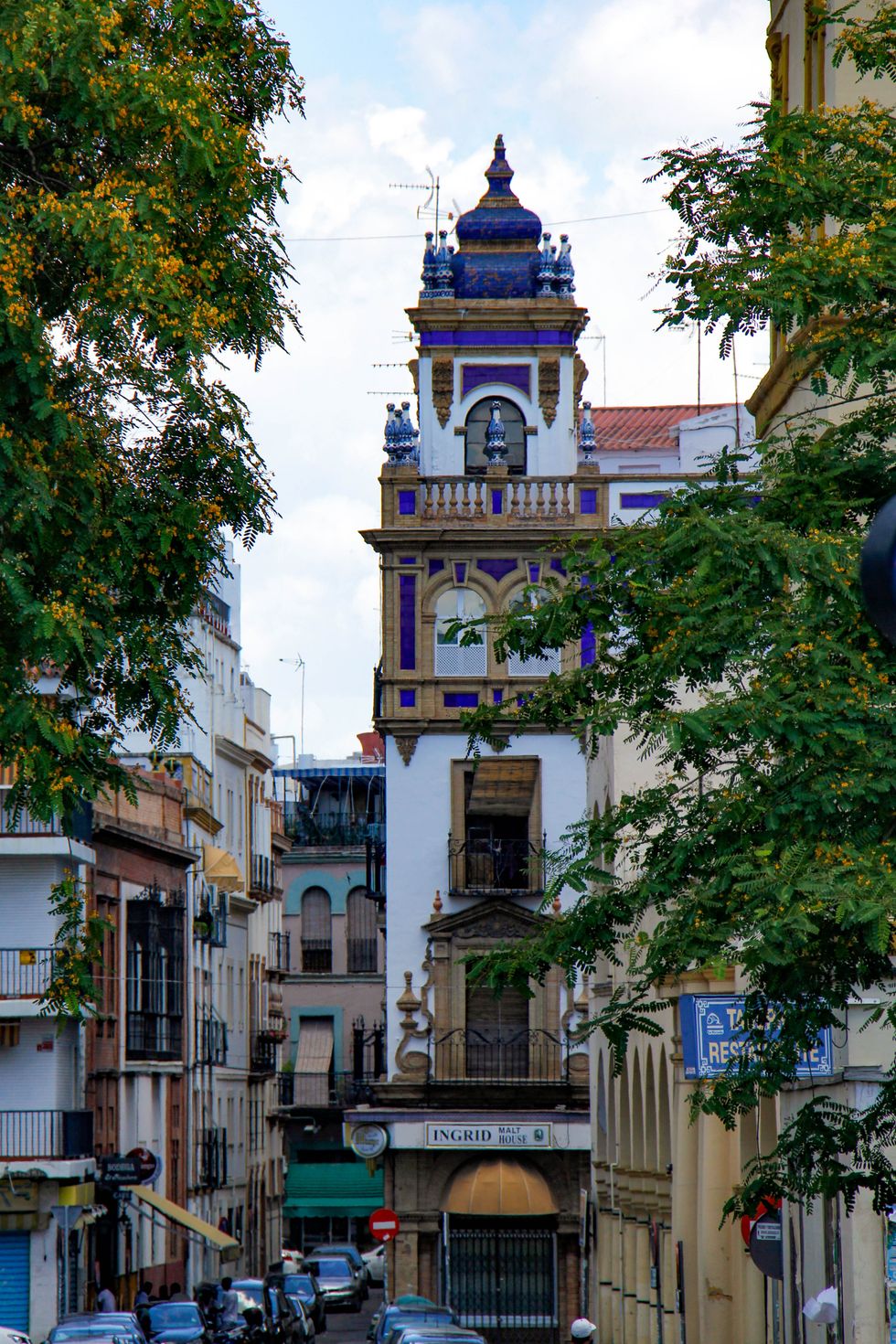
Architecture in Seville
Ambar Mejia/xoNecole
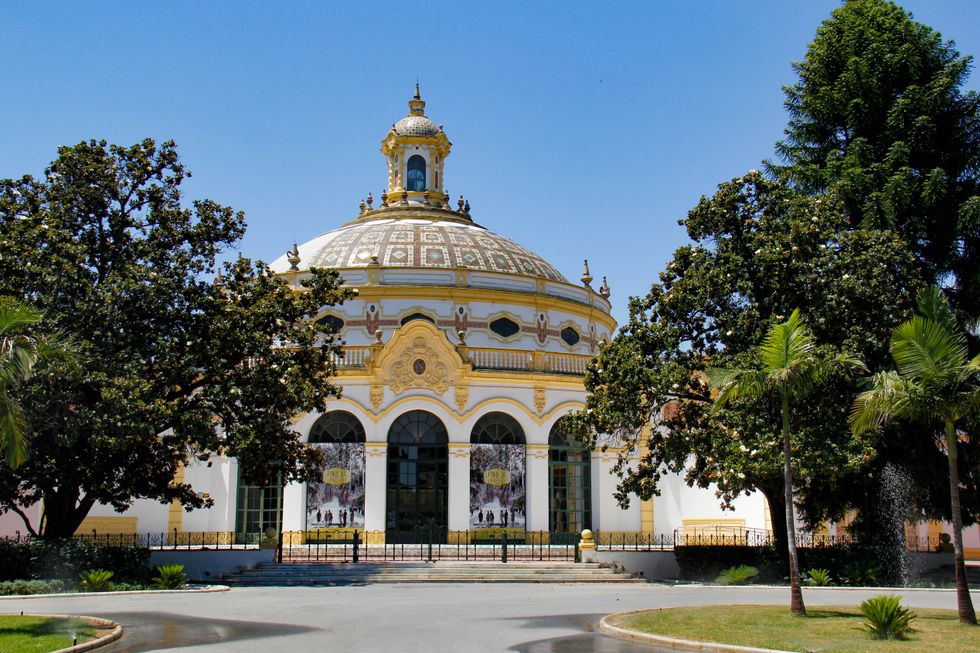
Architecture in Seville
Ambar Mejia/xoNecole

Architecture in Seville
Ambar Mejia/xoNecole
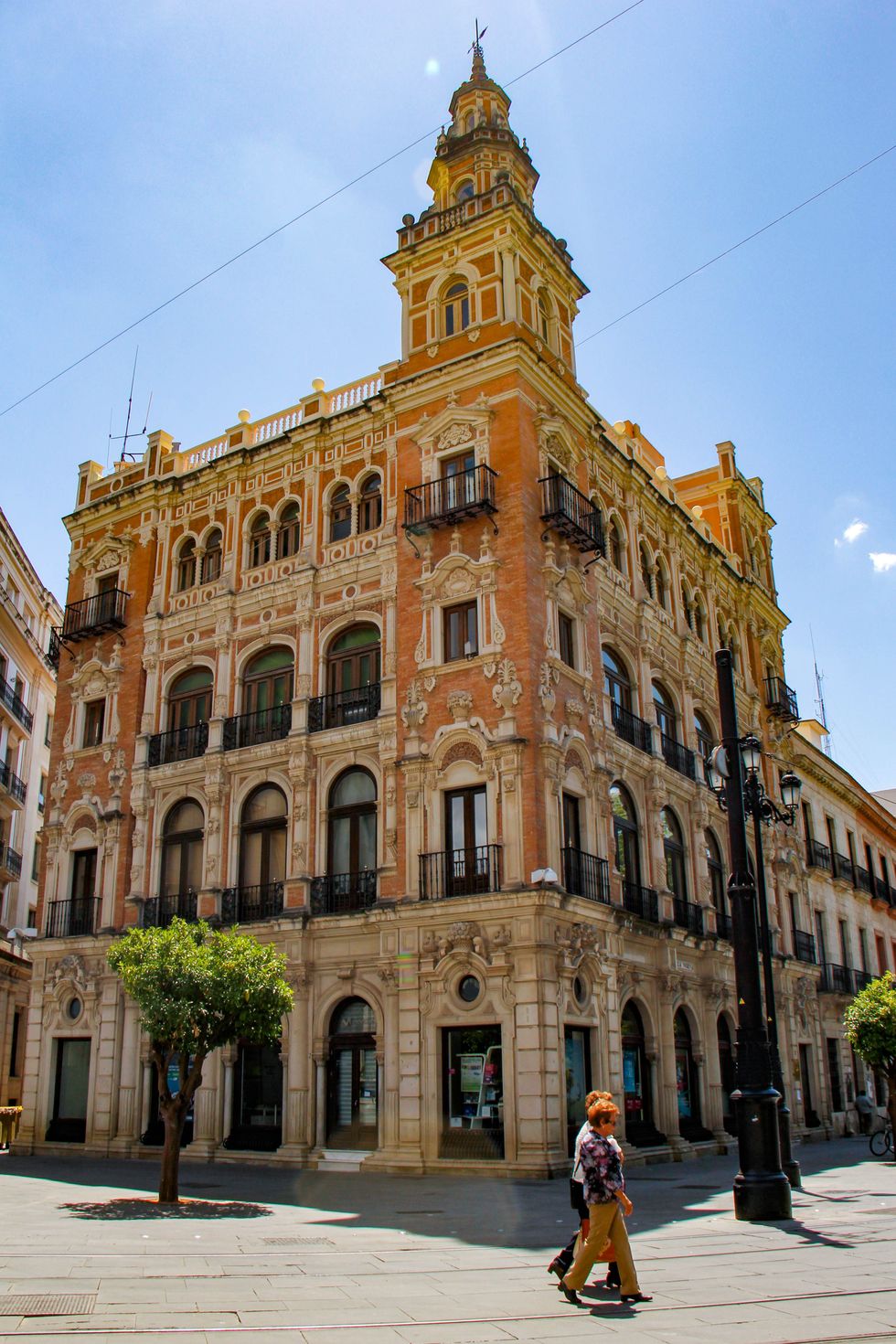
Architecture in Seville
Ambar Mejia/xoNecole
For a cultural tradition?
Come in April! First off, the month kicks off with Semana Santa. A week-long religious celebration with traditional processions dating back to medieval times. Even if you are not religious, this is an iconic cultural event to witness and the biggest one in all of Spain. From morning to night, you will witness traditions and processions throughout the streets of Seville. IT. IS. INCREDIBLE.
Culture Shock Alert:
The costumes for Semana Santa are eerily reminiscent of the KKK. The Spanish used it long before the KKK ruined the association, but I won’t lie, y’all, it was shocking to see at first.
A few weeks after Semana Santa is La Feria de Abril (The April Fair), a celebration of spring. Locals will don their traditional Sevillano attire, and you can join in the fun. This is also one of the most emblematic ferias in Spain.
Warning: It is expensive to stay in the area during this time. So booking far in advance is recommended.
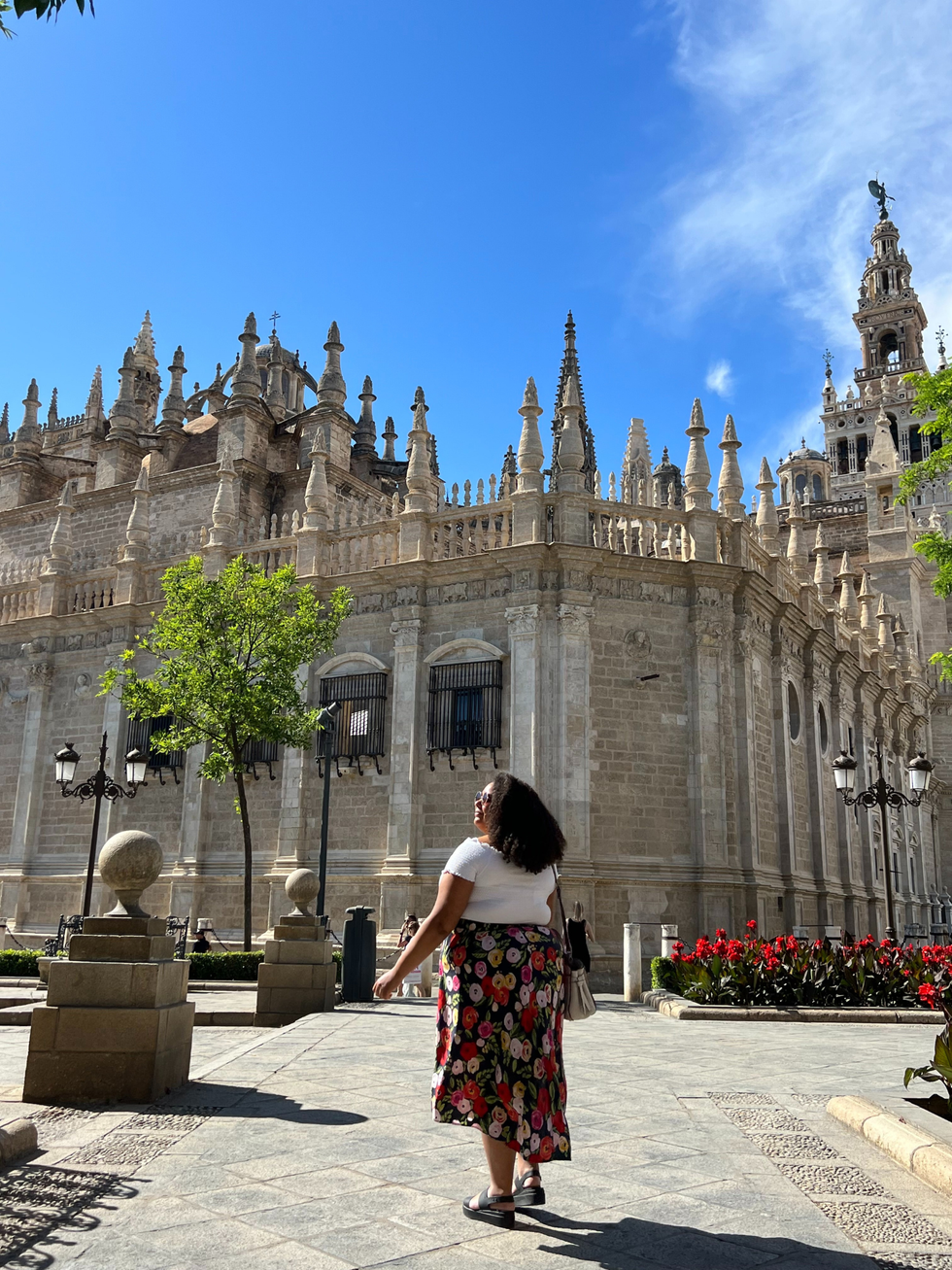
La Catedral
Ambar Mejia/xoNecole
Suggested Day Trips From Seville
I recommend Cadiz during summer if you’re looking to hit the beach in a colorful city or in February if you want to enjoy the biggest Carnaval in continental Spain. If you’re looking for a charming mountaintop town or a nice hike during fall, check out Ronda.
Lastly, if you want to explore more Moorish history and architecture, head to Cordoba.
Let’s make things inbox official! Sign up for the xoNecole newsletter for daily love, wellness, career, and exclusive content delivered straight to your inbox.
Featured image by Ambar Mejia/xoNecole
Your December 2025 Monthly Horoscopes Are All About Surrender & Alignment
December is about letting go. We end the year with the need for more peace, reflection, and rejuvenation, and that is exactly what December is providing for us. The Sun is in Sagittarius, and anything is possible. This is the month to believe in that and to know that the universe is supporting you. With a Supermoon in Gemini as we begin the month as well, we have an opportunity to gain the closure we have been looking for this year and to wrap up old projects, ideas, and communication breakthroughs.
This is the month to make your peace the priority and let go of trying to control the way the tides are turning. Trust in your new beginning, and give yourself time to prepare for it this month.
A big part of the clarity that is coming through this month is due to Neptune going direct in Pisces on December 10, after being retrograde here since July. With Neptune now direct, we are able to see our inspiration and creativity a little more clearly, providing the perfect energy for dreams and manifestation to be built upon. The smoke is clearing, and it’s up to you to decide what you want to do with this newfound clarity that this transit is bringing. Mercury also moves back into Sagittarius on December 11, which is great for communication and clarity, and the adventures you were trying to see through at the beginning of November come around for you again with greater purpose and support.
On December 15, Mars enters Capricorn until the end of January 2026, and this is the extra push we need to make important changes and to be on the path towards greater abundance, stability, and prosperity. Mars in Capricorn takes care of business, and we have extra energy at our disposal during this time to do so. This transit is an ideal time to focus on your career or financial goals for next year and to start putting some of these plans into motion now. A few days later, we have the New Moon of the month, which will be in Sagittarius on December 19, and this is the perfect New Moon to manifest.
The energy is high, magic is in the air, and it’s all about moving forward with the new beginnings that are inspiring you and bringing you joy to think about right now.
Capricorn Season officially begins on December 21, and this earth sign energy is how we heal, gain closure, and build new foundations in our world. With Venus also moving into a Capricorn a few days later, there is something about peace, prosperity, and security that we are gaining in life and in love as we close out the year, and this is what we need right now. This month is about reflecting on what was, letting go of old hurt, and renewing. December is an ending and a new beginning in one, and there is magic in this space to be created.
Read for your sun and rising sign below to see what December 2025 has in store for you.
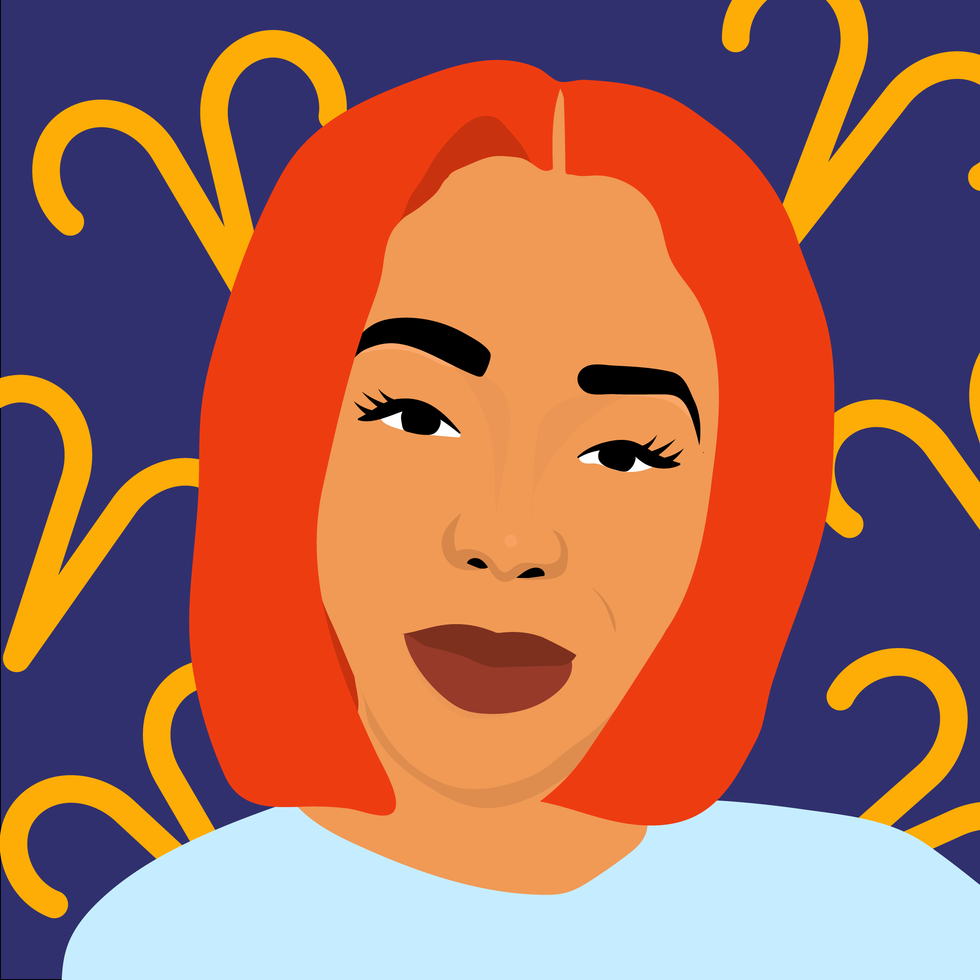 AriesKyra Jay for xoNecole
AriesKyra Jay for xoNecoleARIES
December is a full-circle moment for you, Aries. You are seeing the gifts in your world and have a lot of gratitude for the way things have come about for you as of late. There are culminations in your world that are providing you with more abundance, stability, and community, and you are exactly where you are meant to be this month. With the Sun in a fellow fire sign and in your 9th house of travel for most of the month, December is a good time to get out of your comfort zone, explore the world around you, and get your body moving.
Mars, your ruling planet, also makes a change and moves into Capricorn on December 15, which will fuel your inspiration and power in your career space. You are making a lot of professional progress as we close out the year; however, make sure to be more mindful of your competitive drive right now. The New Moon on December 19 is the perfect opportunity for you to create some new plans and goals when it comes to traveling, education, and where you want to gain some new inspiration in your world. Overall, this is a month of things coming together for you serendipitously.
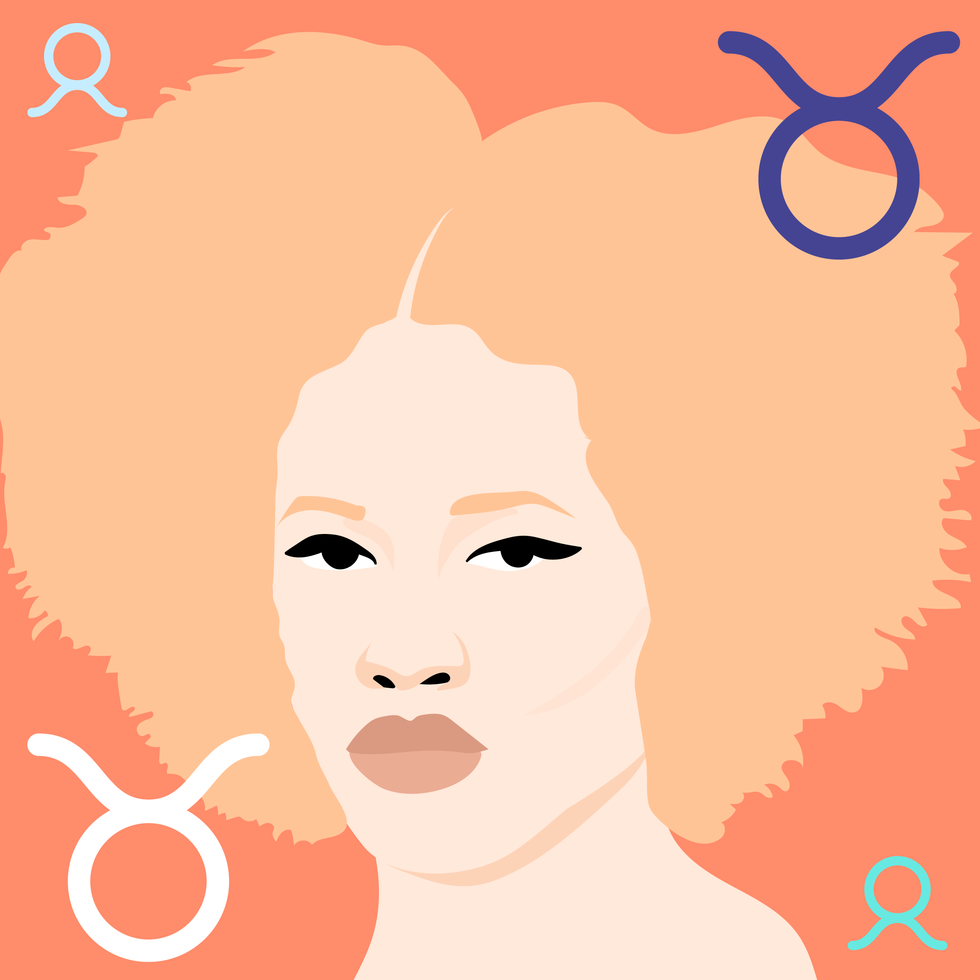 TaurusKyra Jay for xoNecole
TaurusKyra Jay for xoNecoleTAURUS
December is about trusting your intuition, Taurus. You have a lot on your mind this month, and it’s best to delegate, communicate, and allow yourself some relief by opening up to someone and not feeling like you have to hold everything in. As we begin the month, we have a Supermoon in Gemini happening in your house of income, and the plans and projects you have been building here come to fruition for you now. This is the time to gain clarity on your financial world and to take a look at what spending habits you want to let go of here as well.
With Venus in your 8th house of shared resources for most of the month, you are doing a cleanse on your commitments, partnerships, and business ventures. You are taking a look at what you want to dedicate yourself to in the future, and what commitments you may need to let go of now in order to be in the space you truly want to be, both financially and within some of your relationship dynamics. Before we end the month, we have a New Moon in this same area of your chart, and it’s time to look at the opportunities that are presenting themselves and to trust your internal guidance system to lead you forward.
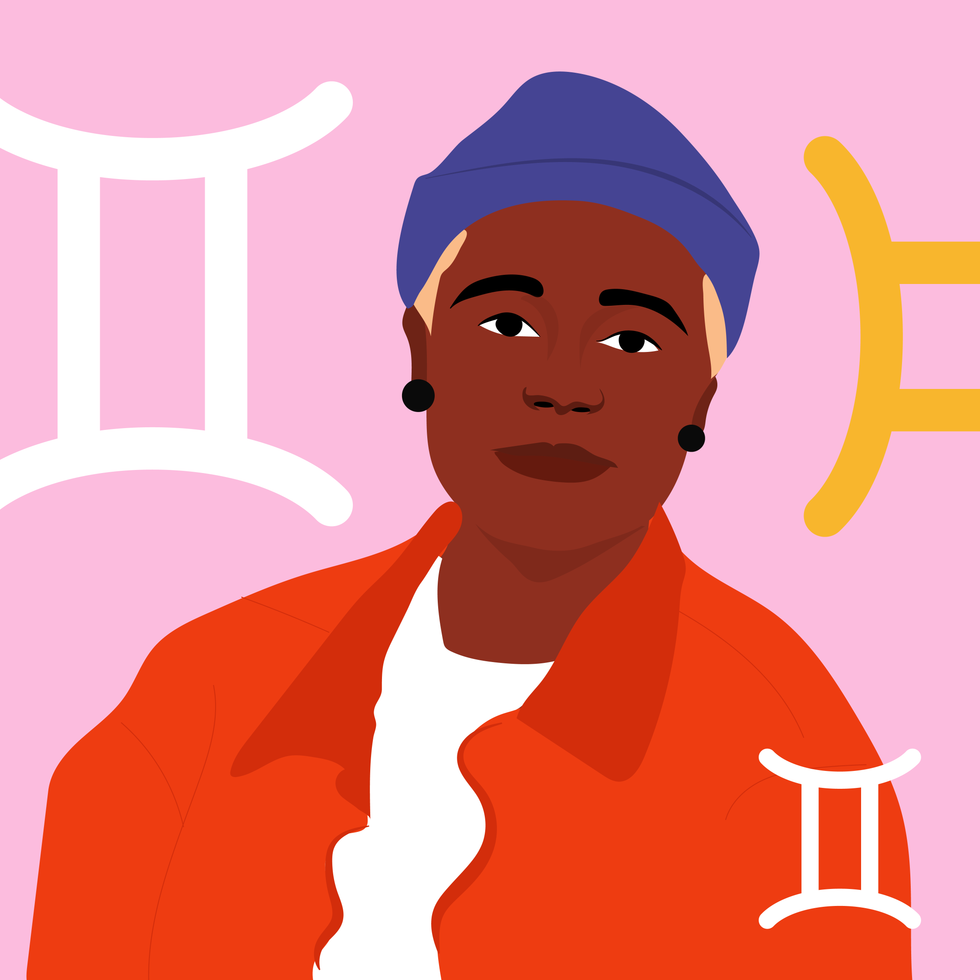 GeminiKyra Jay for xoNecole
GeminiKyra Jay for xoNecoleGEMINI
You are moving forward fearlessly this month, Gemini. December is your month of love, passion, and dignity, and you are owning the light that you shine. We begin the month with the last Supermoon of the year, happening in your sign, and you are stepping up to the plate. You are showing up, owning how much you have grown this year, and allowing yourself to heal while also acknowledging that you have done your best and you deserve to have fun in the midst of the changes you are creating.
Mercury, your ruling planet, is officially out of retrograde, and you can use this energy to the fullest potential now. With Mercury in your 7th house of love, it’s time to speak from the heart and to talk about the things that matter and that are inspiring you right now to your loved ones. You never know what kind of epiphanies you may have when you open up the conversation to others. Before the month ends, you have a New Moon in this same love area of your chart, and this New Moon is all about manifesting romance, commitment, and abundance in your world.
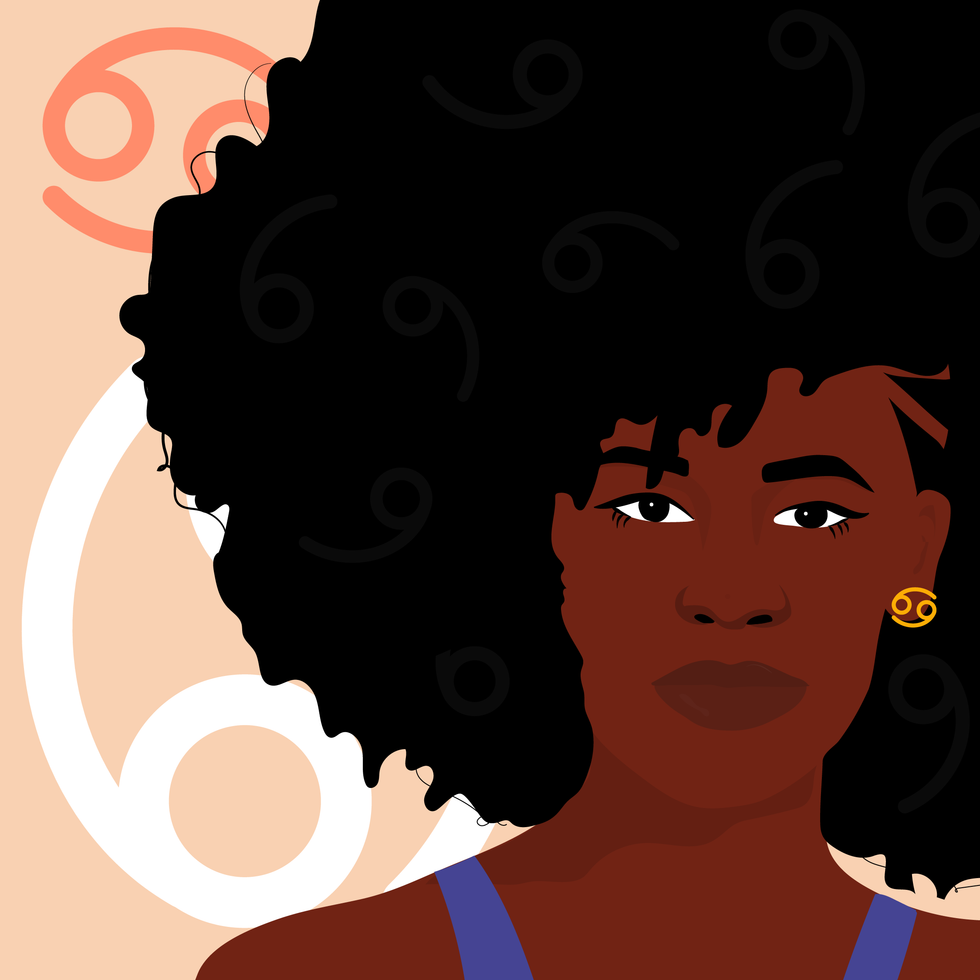 CancerKyra Jay for xoNecole
CancerKyra Jay for xoNecoleCANCER
December is an opening for more love, more joy, and more freedom in your life, Cancer. You have come to a place where you hold so much gratitude in your heart for where you are today and where your heart is shining, and things come together for you with more ease right now. With the Sun in your 6th house of health, work, and daily routines for most of the month, you are getting your ducks in a row while also putting more energy and effort into taking care of yourself, your priorities, and your well-being. This month surprises you in many ways, and it’s because you are showing up.
Mars and Venus both move into your house of love, relationships, marriage, and abundance this month, and you are making strides in your love life. You have both of these opposing forces on your side and are being recognized for the love you are while also receiving the love you want. This month, overall, is about focusing more on the positives in your world and letting your heart have its joy. Before December comes to an end, there is a New Moon in Sagittarius, and this is the perfect opportunity to create the plans you want to see through next year, especially when it comes to your work life, colleagues, business ventures, and health.
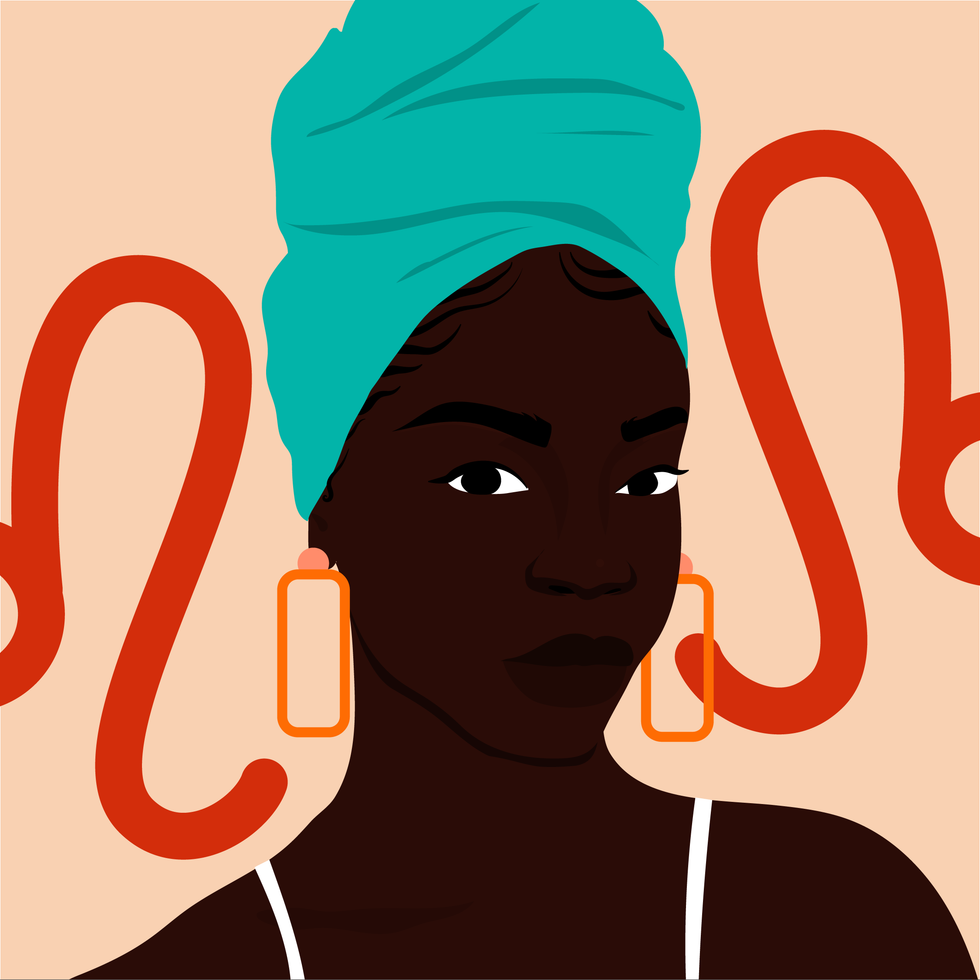 LeoKyra Jay for xoNecole
LeoKyra Jay for xoNecoleLEO
The scales of karma are balancing, and they are balancing in your favor this month, Leo. December is your month of truth, and of seeing it clearly in your world. The Sun is in your house of romance, pleasure, and happiness for most of the month, and it’s time to relax, be in the present moment, and allow what is meant to be, to be. With a Supermoon in your 11th house of manifestation as December begins, this is a powerful month for seeing your dreams come to fruition, and for feeling like the intentions you have set this year are finally here for you now.
Mars also moves into your 6th house mid-month, and this is the perfect energy to have to move into the new year. You have extra energy at your disposal right now and are feeling fearless with what is possible for you and your daily routine. Before the month ends, we also have a New Moon in a fellow fire sign, Sagittarius, and this is a breakthrough moment for you and your heart. December, overall, wants to show you how loved and supported you are and will be doing so in magical, unexpected, and concrete ways.
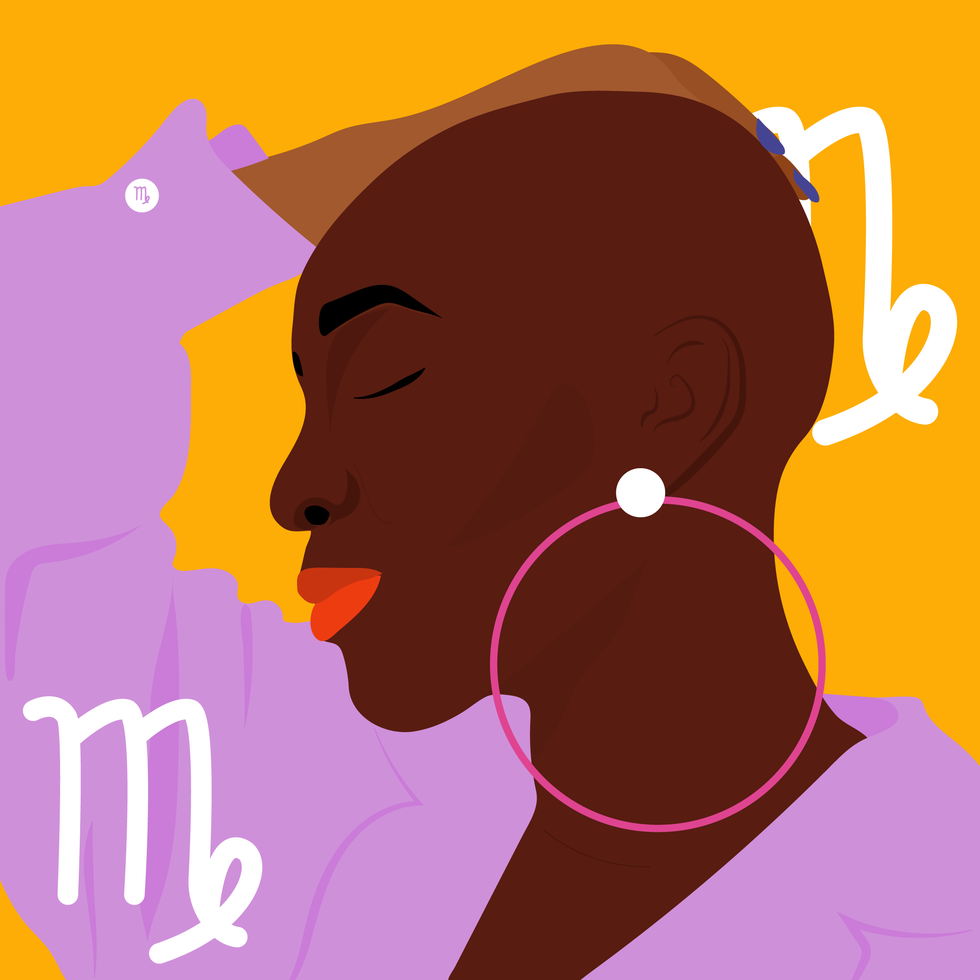 VirgoKyra Jay for xoNecole
VirgoKyra Jay for xoNecoleVIRGO
December is a month of victory, Virgo. You are showing up and experiencing some new successes in your world that move you forward on your path in life. With a Supermoon in your 10th house of career as we begin the month, the effort and intentions you have made this year come into full bloom, and you are being recognized for who you are and the good work you have done. This month is all about showing up and allowing yourself to be seen and loved, knowing that you deserve the support and opportunities you are receiving.
Mars moves into Capricorn on December 15, which brings the passion and excitement into your love life, hobbies, and little pleasures in life that light you up. You want to have fun this month and are going to be walking into the new year with this fearless, happy, and spontaneous energy within you. Before the month ends, Venus also enters Capricorn, and in this same area of your chart, you have a lot to look forward to and believe in right now. Overall, December wants you to be happy and will be doing everything possible to make that happen for you. This is your month to shine, Virgo.
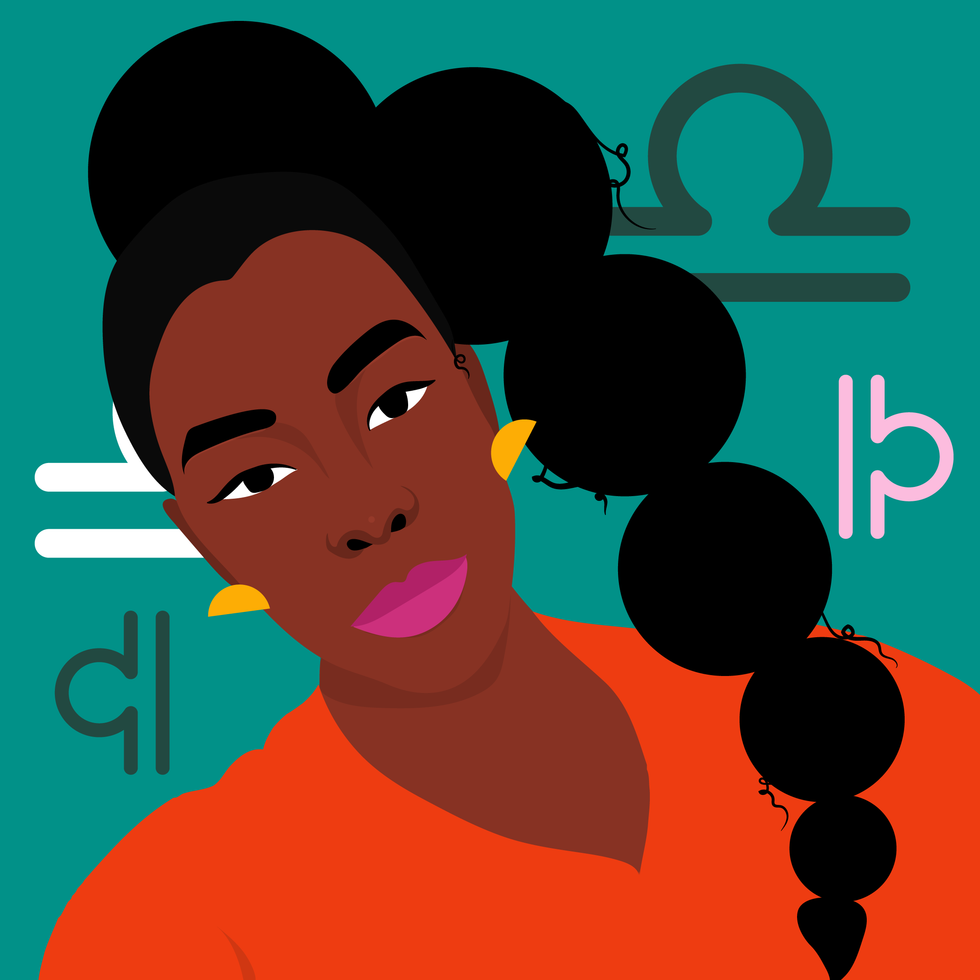 LibraKyra Jay for xoNecole
LibraKyra Jay for xoNecoleLIBRA
December is a month of opportunity for you, Libra. New doors open, and you are financially making breakthroughs this month because of it. December begins with a Supermoon in your 9th house, and you are getting a clearer view of where you have been making strides in your life and how it has all brought you here to this present moment of freedom. This month is showing you what happens when you are fearless with your purpose and when you believe in yourself and what you are worthy of.
Moving further into December, Mars moves into your 4th house of home and family mid-month, and you are closing out the year in your safe spaces. You are spending more time with your loved ones and taking the time to quiet your mind and listen to what your heart has been telling you. Before the month ends, we have a New Moon in Sagittarius, happening in an area of your life that deals with communication. This is a great time for getting the answers you have been looking for and for feeling more clear-headed and confident about the decisions you are making as you move into the new year.
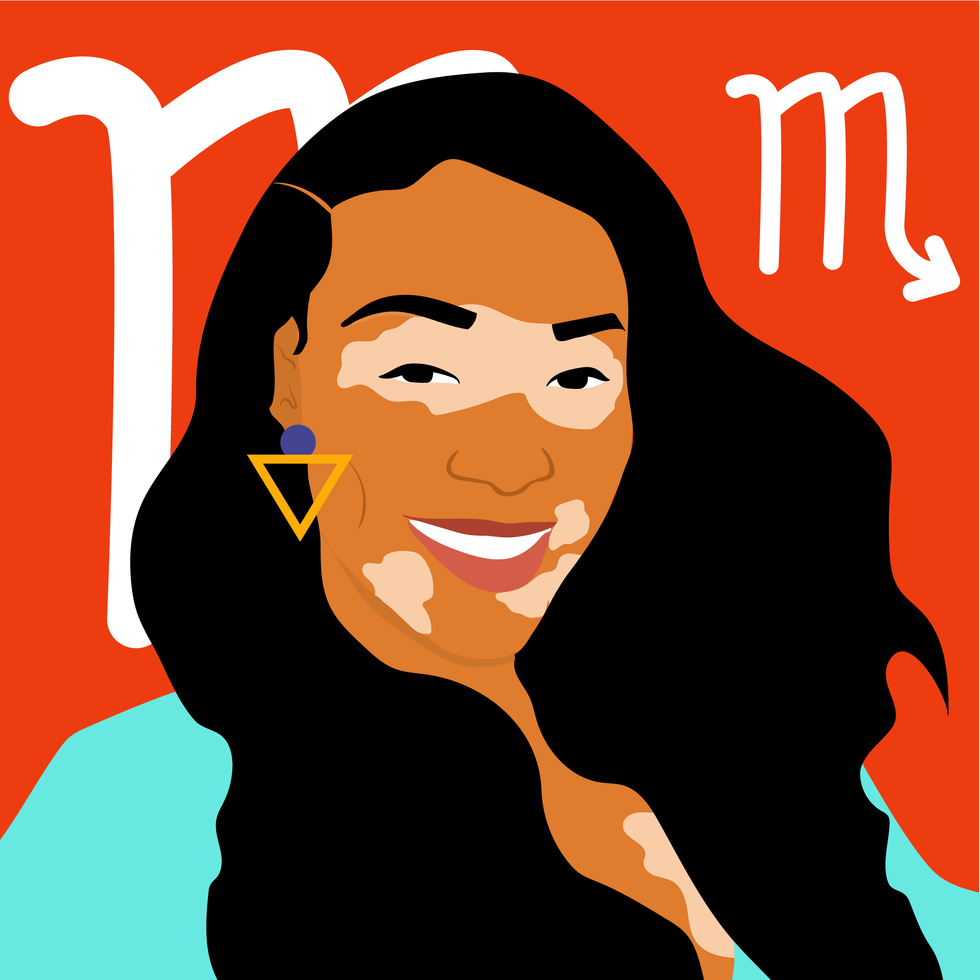 ScorpioKyra Jay for xoNecole
ScorpioKyra Jay for xoNecoleSCORPIO
Patience is a virtue this month, Scorpio. December is all about remaining patient and vigilant with what you are creating in your world, and knowing that the universe has your back. It’s time to be reminded of the power of hope, and this month is an opening to greater clarity in your life. There is a lot of energy in your financial zones right now, and this is providing you with new opportunities and new insight; however, the speed at which things come about for you may feel daunting. Keep your head up and eyes focused on what you want and know that you are more than worthy of receiving it.
With Mercury in your 2nd house of income this month, December is a good time to plant new seeds and to think about where you want to be financially a month from now or even a year. This month is asking you to think bigger and to think more long-term so that you can set the appropriate plans into motion now. We also have a New Moon in your house of income before the month ends, and this is when you will see more of your dreams come to fruition in this area of your life, and have more opportunities to build. Overall, December will be teaching you a lot, Scorpio.
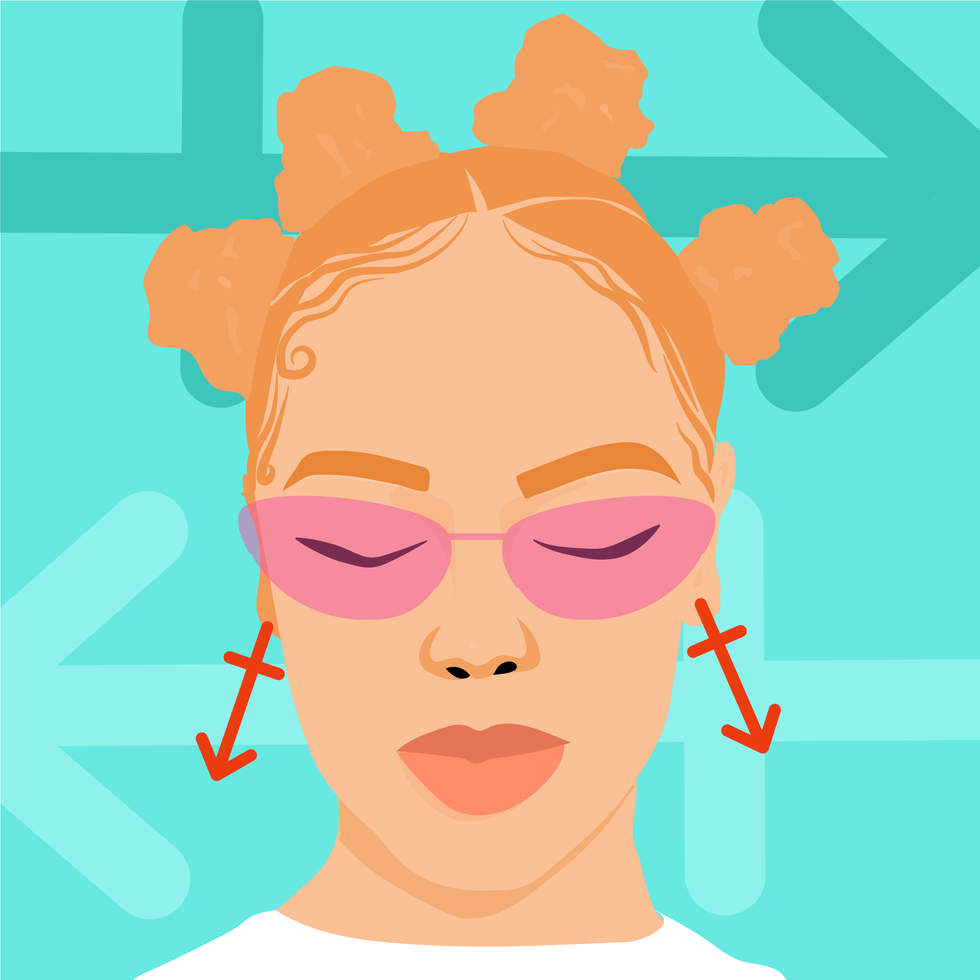 SagittariusKyra Jay for xoNecole
SagittariusKyra Jay for xoNecoleSAGITTARIUS
Sagittarius Season is here, and there is a lot in store for you this month, Sag. December is all about what you are dedicating yourself to. It’s about setting your intentions and putting the work in to back up your dreams, and about getting things in order so that when the new beginnings come, you are ready for them. The Sun and Venus are in your sign for most of this month, and there are a lot of eyes on you right now. You have the potential to create a new beginning for yourself, and it’s time to invest in yourself, your love life, and your dreams.
Mercury moves into Sagittarius on December 11, and this is giving you another opportunity to see through some of the plans that you had initiated in November. Mercury was retrograde in your sign last month, and there may have been some disruptions to your vision and plans for the future, and now this energy is turning around for you. Before the month ends, we also have a New Moon in Sagittarius, and you are walking through new doors fearlessly. You are catching others by surprise by your growth this month, and you are thinking a lot about your purpose, future, and plans for the new year.
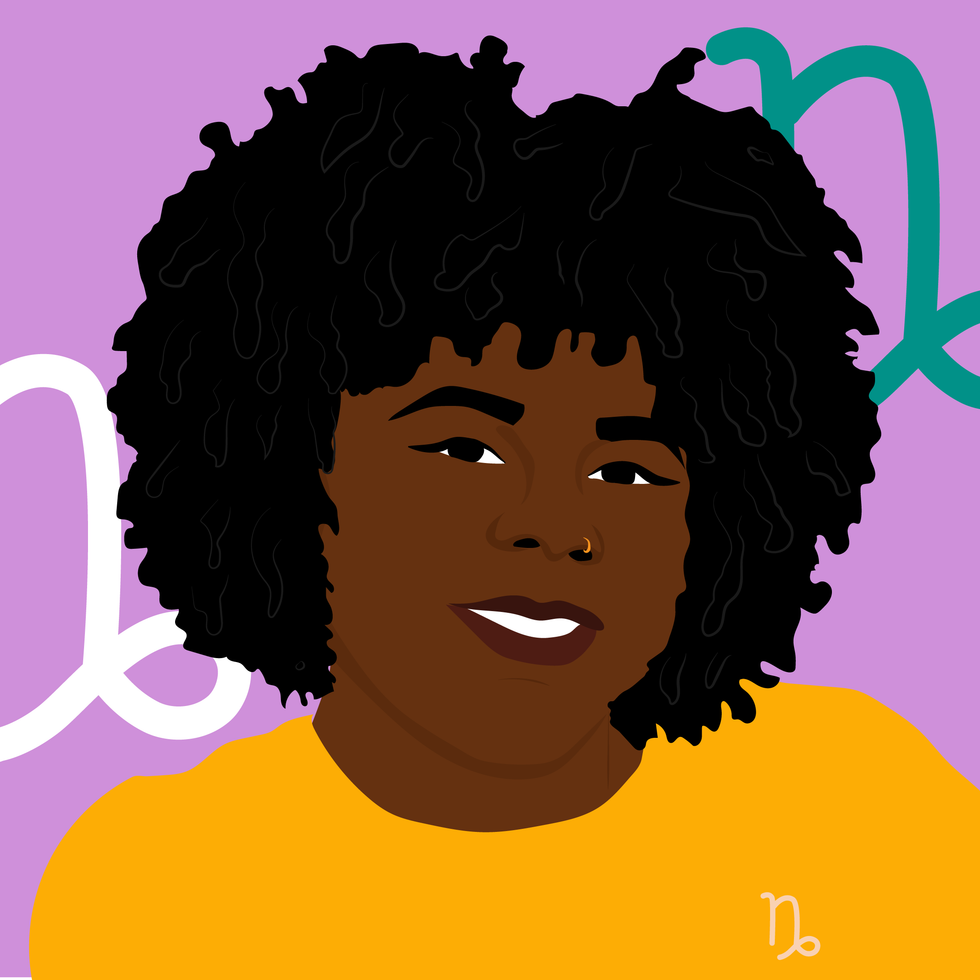 CapricornKyra Jay for xoNecole
CapricornKyra Jay for xoNecoleCAPRICORN
December is all about the vision, Capricorn. You are moving through a lot of changes and transformations this month, yet they are giving you a chance at a new beginning in the process. You are focused more on the future and what goals you want to manifest for yourself right now, and are ready to let go of what hasn’t been working for you. With the Sun in your 12th house of closure for most of December, this is your time for healing, but remember, healing doesn’t have to be isolating or boring; you can thrive while you renew, and you are this month.
Mid-month, the excitement picks up for you, and you are feeling more energized than you have in a while. Mars moves into Capricorn until the end of January 2026, and you are being proactive with your goals, intentions, and passions. You are a force to be reckoned with this month, and you are making things happen for yourself with confidence. Capricorn Season officially begins on December 21 this year, and this is definitely speeding up your healing process. You are breaking free from what was, and with Venus also moving into Capricorn before the month ends, you are leaving this year in high spirits and with love opening a new door for you.
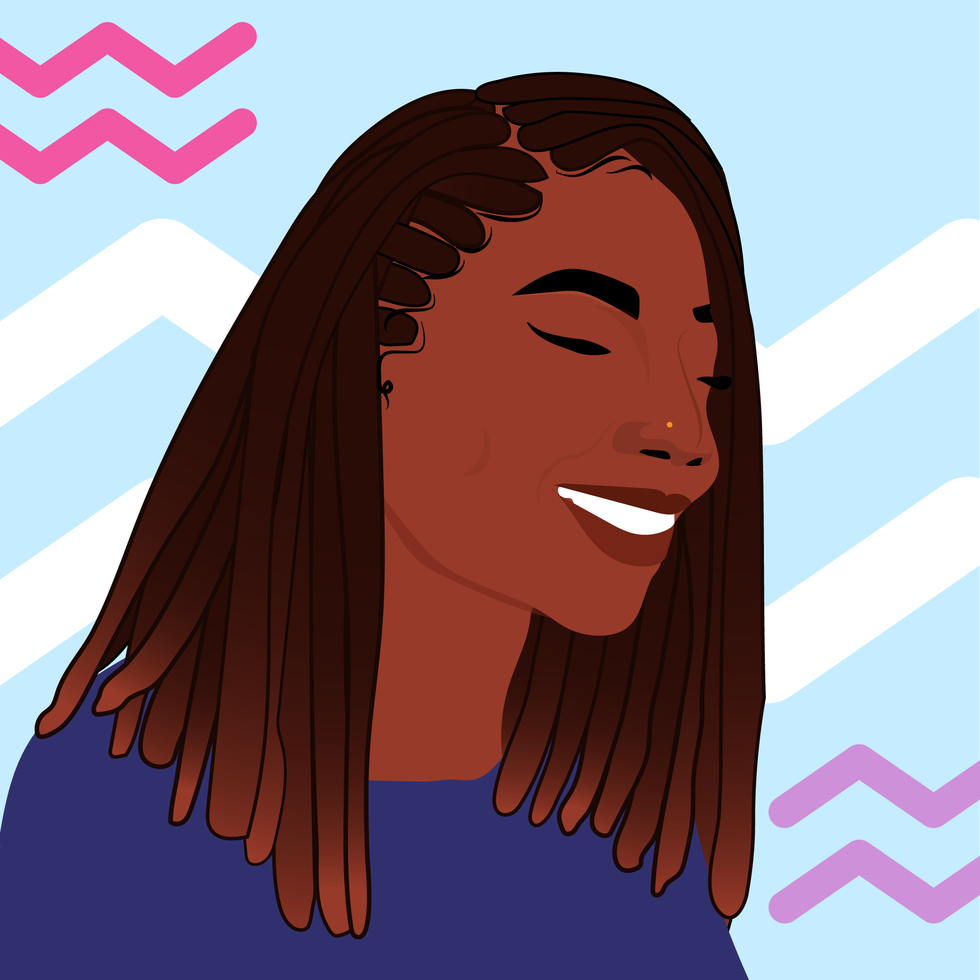 AquariusKyra Jay for xoNecole
AquariusKyra Jay for xoNecoleAQUARIUS
December is all about community, creativity, and manifestation, Aquarius. This is the month to work together with others to help bring your dreams to life. You are in a space of inspiration, empowerment, and beauty, and are creating more of this energy around you and in your world. Look out for what support comes your way this month and know that you don’t have to do everything alone to succeed. With the Sun in your 11th house of manifestation and friendship, your intentions are coming to fruition, and it’s time to celebrate with the people you love and to own how far you have come this year.
On December 19, we have a New Moon in Sagittarius, lighting up your life in all of the best ways possible. This is your New Moon of freedom, victory, and magic, and you are seeing new beginnings appear that you were once just hoping for. Before the month comes to an end, Venus moves into your 12th house of closure, and after an active and successful month, you are ready to relax, heal, and give your heart some of the attention it has been asking for. You are moving into the new year with the need to release and renew what hasn’t been working in your relationships, and you are finally ready to.
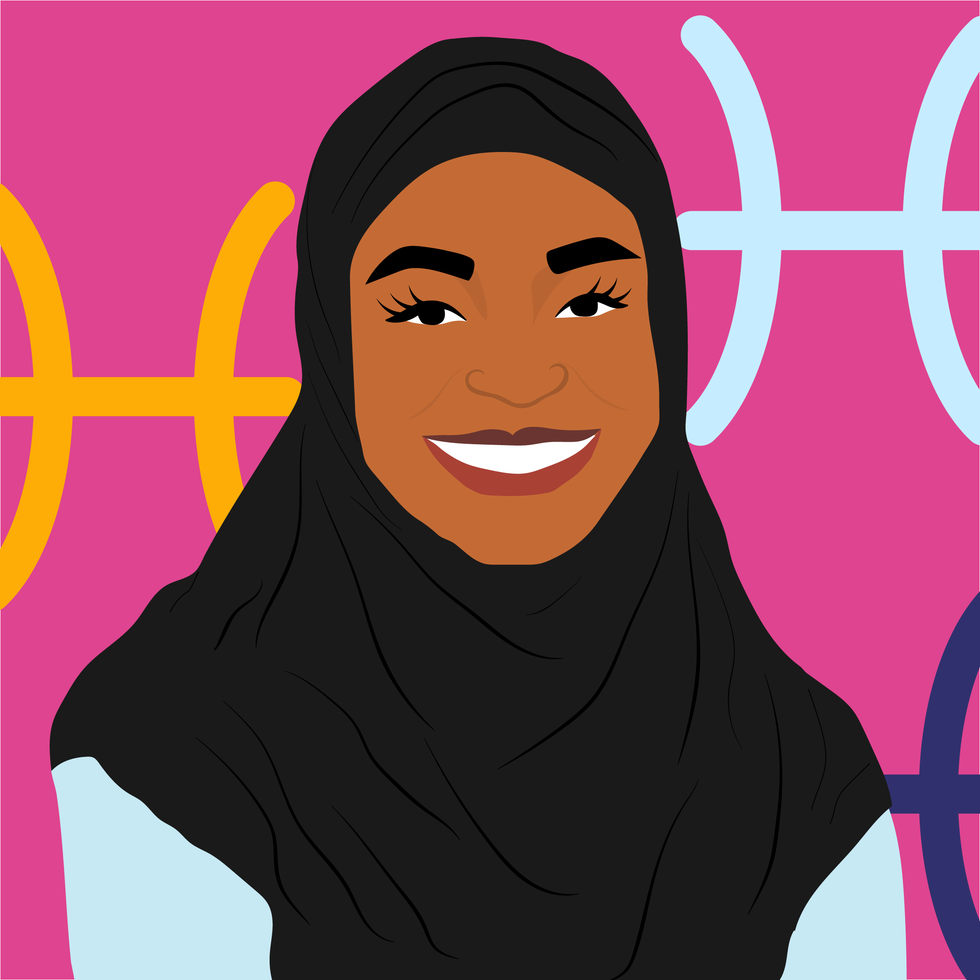 PiscesKyra Jay for xoNecole
PiscesKyra Jay for xoNecolePISCES
December is a big month for you, Pisces. You are making some huge accomplishments this month, and are feeling like everything you have been through this year has been worth it for these moments that are coming to fruition for you now. The Sun is in your 10th house of career and reputation for most of the month, and this is where a lot of your focus is right now. You are claiming your successes and putting yourself out there in ways that not only serve you, but that inspire others as well.
Neptune officially goes direct on December 10, after being retrograde in your sign since July, and you are finally seeing things a little more clearly. You are feeling renewed inspiration and passion in your life, and your intuition is your strongest asset right now. Before December comes to an end, we also have a New Moon in your 10th house of career, and what happens now not only changes things for you in the present, but it also opens new doors and what is possible for you in the new year as well. Overall, you are on top of your game this month and are owning the joy and empowerment you feel.
Featured image by Kyra Jay for xoNecole
You're Over Him. Should You Wait Until After The Holidays To Say It?
When a client told me that she was seriously considering ending her relationship of 10 months before Christmas, I wasn’t surprised. That’s not a sneak diss on what she has going on with her man or anything; it’s just that I know that the holiday season (the month of December, more specifically) is a very popular time for folks to call things off. Between the pressure of bringing people around family and the urge to start off the new year with a clean slate — yeah, it makes sense.
At the same time, though, I do think that there is something to be said for ending things well — and when it comes to a break-up? During this time of the year? Before you make that official move, I just want to make sure that you’ve thought a few things through.
Things like what exactly? So glad that you asked.
How Serious Is the Relationship?
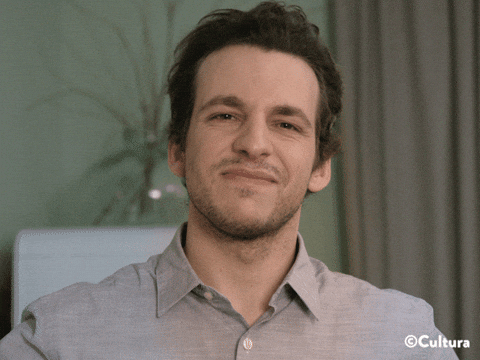 Giphy
GiphyOkay, so if you’ve never heard of the “10-date rule” before, it’s basically the belief that after 10 consecutive dates with someone, it’s time to come to the conclusion that you are officially in a relationship with them. Personally, I have lived, observed and counseled enough people to say that when it comes to knowing where you stand with another person, you shouldn’t assume one damn thing — you should 1000 percent communicate your thoughts and listen to theirs in return.
That said, it is a bit different (wouldn’t you say?) if you’ve been out on a couple of dates with someone vs. if you’ve been with them for almost a year. So yeah, the first thing to ponder is how serious the dynamic is. Because honestly, if things are new and fairly casual, I don’t see how ending things, whether it’s the holiday season or not, is going to matter much — one way or another.
Remember, the holidays tend to be a very emotional time; however, if there isn’t a huge emotional investment going on, I don’t think anyone in a casual situation is going to look back and think that you are a villain (or Grinch), just because you’d prefer not to go on a third date with them. Good lord.
Next point.
Do You Want to Slow Down or End Things Entirely?
 Giphy
GiphyAre you totally over him or is it more like there are some things about the situation that you want to step back and ponder before making any major decisions about the future? If the answer is “B,” I recommend talking it over ASAP; especially if the two of you have been seeing each other for a while at this point. I say this because, whether you all are at the “meet the family” (or have already met the family) stage or not, when people are in a relationship, they tend to factor one another into their holiday plans — and it’s hella inconsiderate to not take this into account when it comes to the guy who you are seeing.
That said, I will say this: It’s mighty interesting that you are choosing this time of the year for this type of relational self-reflection — so, while you’re on this break, think about what it symbolizes.
For instance, are you slowing things down right now because you’re not sure if you want to go into a new year with him or are you doing it because spending the holidays together tends to represent that a relationship is far deeper than you want yours to be right now? Because really, you could’ve gone with the summertime (for example) not the holiday season to make this type of move…so, if your “pump the brakes” time is now, chances are, there is some subconscious subtext going on that you really should get to the root of.
Actual Holidays Are a DEFINITE No-No
 Giphy
GiphyYou would think that this wouldn’t need to be said yet since I once experienced a guy who decided to be a complete a*shole on my birthday some years back — yeah, let’s address it. Isn’t it interesting that one study revealed that during the first week of December, searches for how to break-up with someone go up by a whopping 60 percent? Then, if you add to that the fact that the holidays can sometimes be pretty stressful — well, while most folks with a heart and a conscience wouldn’t dream of breaking up with someone on an actual holiday, sometimes the pressure of everything can create the perfect storm for it to happen anyway.
That said, a super-duper throwback song by Neil Sedaka entitled, “Breaking Up Is Hard to Do” — and it absolutely is. Know what makes it worse: It happening on a holiday, so that every time the day rolls around, it’s bittersweet because you remember that someone broke up with you then.
Listen, just because you may not love or even like someone (in that way) anymore, that doesn’t mean that you shouldn’t treat them with some common decency and respect. Besides, don’t you also want your own Thanksgiving, Christmas Eve, Christmas Day, New Year’s Eve and New Year’s Day to be as unscathed and drama-less as possible?
Whatever you’re gonna do, you’re grown, chile. If you want my advice, though — put good energy into your future holiday seasons and avoid breaking up (or even having deep decisions) on actual holidays.
Definitely Keep the Golden Rule in Mind
 Giphy
GiphyProbably, until the end of time, there are going to be debates about whether karma is real (in the sense of it being scientifically proven). While quite a bit of data says that it isn’t and that it tends to be adapted and promoted by certain faiths more than anything — if you do believe that you reap what you sow (Galatians 6:7-8), at the end of the day, that is pretty much what karma is all about and, as I oftentimes say, karma (or sowing and reaping) don’t have expiration dates. In other words, what you have said and done can manifest in ways and at times that you never saw coming. A cautionary tale, indeed.
So yeah — even if you’ve been with ole’ boy for a while now, you’ve tried to make it work and you just don’t see a future for the two of you anymore, however you decide to end it, definitely keep the golden rule of doing unto others as you would want them to do unto you in mind.
Be as kind as you are honest. Be as empathetic (putting yourself in his shoes) as much as you possibly can. Avoid gaslighting him about how he feels about your decision. Be clear about how you’d like things to be moving forward (for instance, if you actually DON’T want to be friends afterwards, there’s no need to say it). And try not to do anything that will make him feel used — like waiting until after receiving a Christmas gift to end it (you’d be amazed by how many people do exactly that. SMDH).
The thing about break-ups is, live long enough, and you’re probably going to be on the giving and receiving end of one. So, even if you’re not really emotionally invested in your relationship anymore, be kind to your future self and be as respectful as possible throughout your…relational transition. Because even if you don’t feel like he deserves it, your feelings up the road, with someone else who may do the same thing to you…absolutely do.
Timing Is Everything
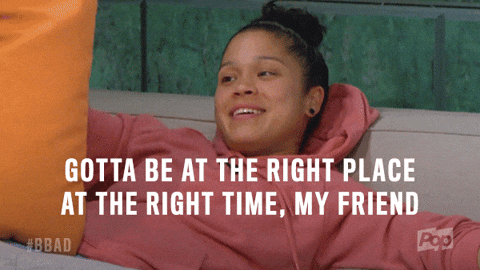 Giphy
GiphyA bishop by the name of Fulton J. Sheen once said, “Patience is power. Patience is not an absence of action; rather it is ‘timing’ it waits on the right time to act, for the right principles and in the right way.” And while it might seem really challenging to figure out when the RIGHT time to break up with someone is — “right” is about using good judgment, right is about conforming to certain principles (like integrity and fairness), right is about doing things in order. Now with that in mind, is the RIGHT TIMING now or should it be later?
Only you can really answer that yet what I will say is if your mind, body and spirit aren’t on the same page — figure out why before making any moves. Oh, and if it’s simply about fear — girl, whether it’s November 30, December 9 or January 14…break-ups are always going to be uncomfortable. It’s about knowing what’s best for you and then ending things in a way that is as respectful, timing-wise, as possible (again, due to the whole karma thing).
____
‘Tis the season and sometimes “out with the old” means leaving a relationship behind. Just make sure that you move with wisdom and discernment and not hypersensitivity and knee-jerking.
That way, you can look back on every holiday season with as little regret as possible.
Due to how you handled things. Including a (potential) break-up.
Let’s make things inbox official! Sign up for the xoNecole newsletter for love, wellness, career, and exclusive content delivered straight to your inbox.
Featured image by Shutterstock


